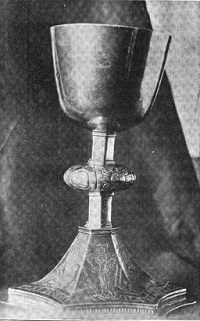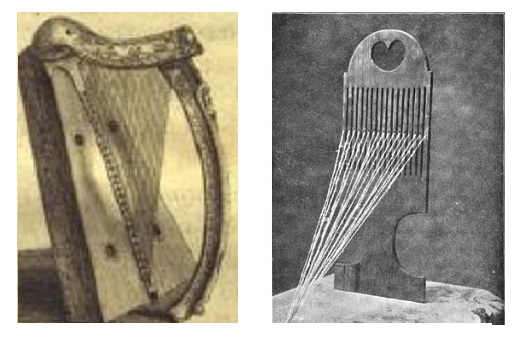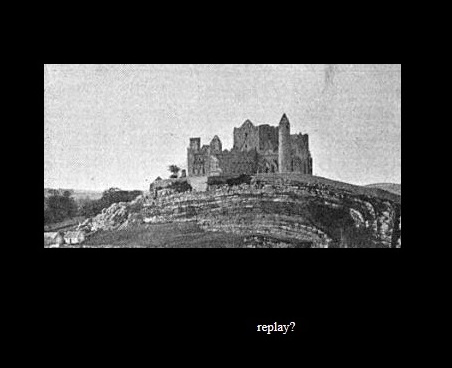
|
Judy Malloy: A writer's notebook is not a final paper but rather reflects the development of a work, in this case a work of electronic literature. In the informal yet productive practice of creating notebooks online, ideas and sources are developed and slowly emerge.
C onsidering the role of online notebooks in the creation of one writer's work is an appropriate closure for this writer's notebook that accompanies The Not Yet Named Jig, . Often begun as artists books, each of the print notebooks, that I kept as a central part of my work before I began writing notebooks online in 2009, gradually evolved as a repository for cryptic notes about the creation of world models, stray code for authoring systems, and superseded explorations of evolving interfaces -- interspersed with details of life, such as uncompleted todo lists and telephone numbers of friends and acquaintances. From an historic point of view, whether or not there is a gain in information about writers' lives in online notebooks depends on if you are interested in shopping lists, dates of lunches with friends, and the unguarded opinions that pepper writers' print notebooks or whether a writer's filtered thoughts (seldom expressed anywhere else) are of value. Contingently, I have found that keeping an online notebook forces a more comprehensive thinking about the work I am creating. This is a primariy reason for spending time creating an Internet-based writer's notebook.
Conversely, there is a potent, tangible "objectness" to print notebooks.
However, there are intangible qualities in online notebooks that may not be so obvious in print notebooks -- for instance how to a certain extent our lives merge with the lives of the characters we are writing; how the images and texts in online notebooks subtly reflect this; and how the edited writing necessary in online notebooks distills our thoughts and keeps us on a path, where an understanding of the vision that informs our work is central. Because my work initially centered on artists books, even in the throes of keeping an online notebook, I have often simultaneously kept a print notebook in which to paste scores, write cryptic notes about as yet constructed world models, record appointments and lunches with friends. But this year with the conjunction of the pleasurable activities of teaching electronic literature and writing and receiving chapters for my MIT Press book, Social Media Archeology and Poetics, and with the intense process of writing lexias for The Not Yet Named Jig, there was not time to keep a print notebook. Thus, as the year ends, I have no print notebook to hold in my hands as a tangible record of the autumn of 2014 in Princeton. The images that float beside this text are from a previous print notebook. Perhaps, at this point, it should be noted that despite the prevalence of the computer screen as a writing substrate, some writers continue to carefully compose daily print notebook entries. Years later, we will find out who they are. (and envy the photographed presence of their notebooks, as they appear in the Twitter accounts of respected institutional archives.) T his week for the Introduction to Social Media Archeology and Poetics, among other things, I am looking at the model of the environment where Will Crowther's Adventure and mailing lists on food, wine, and science fiction existed side by side (although not always uncontested) with ARPANET research. Additionally, in the early 1970's, the online conferencing -- that for instance accompanied the creation of FTP -- was influential in early Internet-based social media, while, at the same time, a plethora of RFC's (Requests for Comment) not only shared the process but also ultimately served to document the roles of researchers. Contingently, in our contemporary Internet era, when writers and artists record the creation of their work -- whether it is through Twitter or Facebook or an online writer's notebook -- our words and images contribute not only to the development of our work as writers and poets but also to the cultural environment of the Internet.
With these thoughts I am reminded that the remainder of this holiday is dedicated to Social Media Archeology and Poetics, while at the same time it might be good to record that Friday I took time for a picnic in the woods. Saturday was an adventure in small town in New Jersey, and this coming week, I look forward to a visit with family. Writer's notebooks -- both print and online -- for the coda to my work of public literature, From Ireland with Letters, will begin in late January, 2015.
A s the year winds down, so does this 2014 writer's notebook, written in Princeton during the creation of The Not Yet Named Jig, a generative hypertext that is Part VII of From Ireland with Letters. The Not Yet Named Jig is not completely finished. In addition to editing, it needs about 20 more lexias, and some tweaking of the authoring system. However, the point has been reached, where it is productive to withdraw from immersion in this work and set it aside for a while. Usually at this point, I line up an exhibition for the work, so that in a few months I will be forced to revisit it in terms of a completed work. In 2015 a new notebook will begin the writing and structuring of the unmeasured polyphonic coda that will conclude From Ireland with Letters. M eanwhile, as a holiday break, I have begun the handmade work of information art, described in the December 8 entry in this notebook and this week named Every look is far. No way is silent from a random sequence in Theo Lutz' Stochastische Texte.
Every look is far. No way is silent is a project to work on from now until the summer. It will require about 200 separate small manuscripts that will be printed and then (based somewhat on the Medieval Chaunce of the Dyse) rolled up and tied with gold string. The project will also require a painted bucket to hold the manuscripts and a generative database of the words. A reoccurring image on the "manuscripts" will be The Lagado Machine which Jonathan Swift described in Gulliver's Travels in 1726. In this holiday week, as a series of enjoyable breaks from working on the Introduction to Social Media Archeology and Poetics, two draft manuscripts for Every look is far. No way is silent were created. The first contains text from Christopher Strachey's Paper, "The 'Thinking' Machine". (Encounter, October 1954, pp. 25-31) The second contains text from Jasia Reichardt's introduction to the catalog for the 1968 seminal London ICA exhibition, Cybernetic Serendipity. Eventually, many more texts and faces from the electronic literature community will appear on in the center and on the borders of these manuscripts. But, it is now time to return to the Introduction to Social Media Archeology and Poetics. In May of this year, Vint Cerf kindly talked with me about the beginnings of the Internet and set forth the relationship of this collaborative development process to the development of early social media. It is a pleasure to review his words.
V isiting/revisiting early papers in computer-mediated narrative -- this week in an early paper by Natalie Dehn: "Story Generation after TALE-SPIN" [1] -- I explored differences in approaches to the role of the computer and the role of the writer in the creation of electronic literature. [2] 1. Assumptions about authorial practice in "Story Generation after TALE-SPIN" illustrate the need to explore the myriad of differing visions of authorial practice when conceiving programs in which the computer simulates the storyteller. 2. In a contrasting approach to computer-mediated narrative, when, in the introduction to the Eastgate its name was Penelope, I wrote: "The reader of its name was Penelope is invited to step into Anne's mind, to see things as she sees them, to observe her memories come and go, in a natural, non-sequential manner." I meant that the use of computer-mediated generative hyperfiction enabled the telling of a story in which the reader experiences the memories and thoughts of the narrator in a way that would not be possible in print literature. Despite the challenging words I wrote in the passage that introduces this notebook entry, in my own work, I have never wanted the computer to be the storyteller. 3. There are surprising ideas about how writers work in Dehn's approach. For instance, she does not believe that writers begin by creating a comprehensive world model but rather that details emerge on the fly to suit the needs of a writer's plot. Perhaps this is not important if the program she conceives is meant to simulate her own thinking as a writer. But -- and this was underscored by the fascinating talk which graphic interactive fiction pioneer, Jane Jensen gave to our Princeton electronic literature class last week, in which she discussed how the rich details of "room" and character in Gabriel Knight were created and recreated -- I doubt if I am the only writer who (before I begin the actual writing) constructs a detailed world model which includes not only the setting but also many details of the characters' lives, even though some of these details may never be divulged to the reader.
5. It should be remembered that Natalie Dehn's "Story Generation After TALE-SPIN" was an important paper in AI approaches to computer-mediated narrative. In Of Two Minds, there are aspects of her process that Michael Joyce credits in the development of his own work, for instance "'..the dual, directed-yet-serendipitous, nature of creative thinking...'" [4] 1. Natalie Dehn: "Story Generation after TALE-SPIN", IJCAI'81, Proceedings of the 7th International Joint Conference on Artificial intelligence, v. 1 pp 16-18 2. In sardonic response, Sara Roberts' challenging AI history-influenced Early Programming is unforgettable. "In it the visitor sits down at a kitchen table with a computer 'mom', (named MARGO), and is recruited, if not forced, into the role of a child". See Anna Couey and Judy Malloy, "A Conversation with Sara Roberts on the Interactive Art Conference on Arts Wire, June 1996 3. James Meehan, "TALE-SPIN, An Interactive Program that Writes Stories", Proceedings of the Fifth International Joint Conference on Artificial Intelligence 1:91-98, 1977. 4. In Of Two Minds, (Ann Arbor: University of Michigan Press, 1995 p. 167) Michael Joyce quotes these words from Dehn's "Story Generation after TALE-SPIN".
B uilding on plans described earlier in this notebook, in this cold, rainy week, I am working on beginning a small information-containing object to respond to challenging issues that the 2015 ELO Conference and its provocative title ("The End(s) of Electronic Literature") raise about the future of electronic literature. In the conceptual foreground are words that the electronic literature community has written about electronic literature (past, present and future) and how our words elucidate the lineage of electronic literature and point to the future of the field. In the conceptual background is the way that print literature and electronic literature echo, inform and inspire each other -- in our own work, in the work of our colleagues, in our lineage. In this case the contingencies between the aleatoric medieval manuscript The Chaunce of the Dyse and Free Values, a work I created in 1988 while considering the bridge between such medieval aleatoric manuscripts and the writing of generative hyperfiction. In this case, Pulskamp and Otero's recent documentation of Wibold's 10th century Ludus Regularis and an interest in the experience of the (diceless) user in the reader-mediated "grab bag" interface (such as I used in the web version of Uncle Roger File 3) versus the seemingly more magical reader-passive, computer-mediated random production of lexias. The exact image for this project has not yet materialized. Meanwhile, the Fry & Co. 1869 steel engraving -- "Invention of Printing - Gutenberg Taking the First Proof" (from the Library of Congress Prints and Photographs Division) raises issues of the changing technologies of conveying the written word. Preliminary Documentation is as follows: Continuing a theme that has been central to my work as an editor in the field, beginning with the "Words on Works" section that I created for Leonardo in the early 1990's -- this work will be based on the words of writer's and critics of electronic literature. Continuing with the concept of information as an artist's material, (first expressed on the Internet in Making Art Online) this work will explore electronic literature though the words of its creators and critics.
E choing the number of entries in The Chaunce of the Dyse, 56 statements will be collected and each printed as many times as needed for the situation. Each small manuscript will then be rolled up and tied with decorative string, so that the words inside are not visible. A bucket to contain the statements will be painted and lettered with something to the effect of
"The Past, Present and Future of Electronic Literature. The manuscripts will then be placed in the bucket. (which will need to be refilled from provided stock as needed) A generative version of the entire database will also be available online. Background (from previous notebook entries) 1."Time travelling in the history of electronic literature, this week in the 10th Century in Medieval France, I encountered Wibold, the archdeacon of Noyon, who hacked dice to turn gambling (forbidden to clerics) into a dice-generated game of acquiring of virtues. "it is very appropriate that having abandoned vices according to the [canonical] rule, [clerics] cast lots for themselves in order to acquire virtues," he noted, according to Richard Pulskamp and Daniel Otero, "Wibold's Ludus Regularis", a 10th Century Board Game, Loci, June, July 2014. (hosted on the website of the Mathematical Association of America) In this prequel to The Chaunce of the Dyse, the cleric possessing the most virtues was the winner. The authoring strategy, described in detail in Pulskamp and Otero's paper, included imprinting the dice with letters." (September 20-21, 2014) 2. "In my current understanding, The Chaunce of the Dyse (MS Fairfax 16 and MS Bodley 638) consists of three introductory stanzas and 56 short narratives, keyed by combinations of the throw of dice. When the game was played, a master of ceremonies read the poetry that introduced this literary game. Each player rolled the dice three times to key the results to a text. The player then read aloud the text assigned to him or her. Based on then relatively contemporary works, such as Chaucer's Troilus and Criseyde, texts were personal, satirical, literary, character building, character destroying, embarrassing, pleasing." (September 7, 2014) In Ethics and Eventfulness in Middle English Literature, (Palgrave Macmillan, 2009) J. Allan Mitchell observes that "The Chaunce of the Dyse haphazardly throws up allusions, attempting by chance to close the gap between literature and life, past and present, 'game' and 'ernest'. This is the way the game produces, for a coterie of readers, the conditions of possibility for events to happen that confer unforeseen meanings on literary experience, respectively and prospectively." (pp. 63-64)
....On Friday morning, there was snow on the ground as I walked across a Princeton hillside. When I arrived home, a copy of John Rosenberg's Dorothy Richardson, A Critical Biography was waiting on the stairs outside my door. In it was the full quote I had been looking for to begin the documentation for The Not Yet Named Jig: O n Sunday, it was a pleasure to spend time with the theory history, and practice of the seminal BBS, THE THING. In their chapter, Berlin-based new media critic Susanne Gerber and Founding Sysop, Wolfgang Staehle, intertwine essay, interview, and multi-page timeline, and in the process innovatively document THE THING -- beginning with the "crossing-over" of art history and media history in the founding of THE THING in November 1991 in a Tribeca basement. Monday was an enjoyable American Studies Fellows luncheon with Program Manager Judith Ferszt, and fellow Californians: historian and labor photographer Richard Street, and environmental historian and writer, Jenny Price.
On Tuesday, in Electronic Literature: Lineage Theory and Contemporary Practice, we explored gender and identity in electronic literature -- beginning both with commemorating Leslie Feinberg's death with a student's immersive, empathetic Inform7 adaptation of the letter in Stone Butch Blues and with remembering lives of African Americans with Wendel White's evocative web work, Small Towns, Black Lives -- and concluding with Marco Williams' challenging Interactive Fiction, The Migrant Trail. Afterwards, the students went on holiday with classics of electronic literature criticism and documentation from my own library. (or perhaps left these volumes in their dorms for future study) At home on Wednesday I wrote a series of new lexias for The Not Yet Named Jig, while outdoors, in the midst of this busy, creative week of Thanksgiving, the weather in Princeton turned from the crisp air of late fall to rain and snow and slush. O n Thanksgiving morning, there was a dusting of snow on the pine trees visible out my window. The weather was conducive to a holiday weekend devoted to a review of papers received for Social Media Archeology and Poetics. (MIT Press, 2016) And -- as new papers arrived by email and in-process papers were returned with approved edits -- the early history of social media continued to come alive in the words of those who created and documented the field.
Papers on my laptop for the long weekend are:
Community Memory -- The First Public-Access Social Media System
alt.hypertext: an Early Social Medium
Art and Minitel in France in the '80s "From the very beginning, and during a few years, the Minitel has been the territory of art projects and art experiments. With a few exceptions, what remains of those artworks, created mostly between 1982 and 1988, is traces, residue and documentation. The process to discover, collect and analyze those fragments in order to elaborate their history has just started. At the time of writing (November 2014), I have identified 73 projects created under the umbrella of the online magazine-gallery ART ACCES Revue and 33 artworks carried independently by 8 artists or groups of artists."
IN.S.OMNIA, 1983-1993
"Surely what fiction, at the its best, can do, is to arrange data, truths in their real relationship by a process of selection. Like an artist making a picture. Something akin happens to us all as we get on in life. We see data of experience no longer chronologically, but rearranged in their true sequence. The past comes at last to life, transformed, rearranged, immortal." - Dorothy Richardson (quoted in John Rosenberg, Dorothy Richardson, A Critical Biography. NY:Knopf, 1973. pp. 155-156.
I n the Princeton woods, the recollection of autumn lingers in the cold November air. It is time for cocoa or hot cider with cinnamon, and ahh -- finally an about file for The Not Yet Named Jig has begun. If the act of attaching it to the opening page was satisfactory, the realization of many words not yet written was disturbing. Nevertheless, there is a beginning: O n the morning of April 24, 1660, the background for the story of Walter Power and Trial Shepard emerges in fleeting descriptions of their lives and environment -- produced at the will of the computer in The Not Yet Named Jig. Created with generative hyperfiction, the world model of a time and place over 350 years ago is surprising.
The decision to move from the polychoral composition (both measured and unmeasured) with which the larger part of From Ireland with Letters was composed, was partially made because of the need for a change of pace in this next to final part. But the primary question was: How could I create a truth-laden world model of a time and place -- the community of Malden in The Massachusetts Bay Area Colony in 1660 -- when many details were simply not available? The answer was to carefully write all the known details into lexias, fictionalize narrative only when necessary, and allow the computer to bring up the lexias at will. And so, returning to the authoring system I developed for the third file of Uncle Roger in 1987-1988 and tweaked for its name was Penelope, beginning in 1988, the lexias for the Not Yet Named Jig appear at the will of the computer, one at a time, or in pages of five.
F rom only the images I have been assembling -- with the possibility of inserting them into the text of The Not Yet Named Jig -- stories could be inferred, written/rewritten. Italo Calvino, of course, has already done this in The Castle of Crossed Destinies, the text that Cliff Wulfman selected as a class discussion to follow my presentation of certain works of electronic literature that function as electronic manuscripts. (an update of the Authoring Software documentation of The Electronic Manuscript) Triggered by The Castle of Crossed Destinies, by the potent image of the door knocker on Ralph Shepard's door in The Not Yet Named Jig, and by the four iconic images above, I returned this week to the output of James Meehan's TALE-SPIN, an early interactive/generative fiction hybrid that generated animal stories in response to reader input. If approached as electronic literature, the output of Meehan's TALE-SPIN leaves much to be desired. No matter how interesting the algorithms, interactive art -- a hybrid of the creative endeavor of artists and programmers -- is ultimately only as effective as its content. Indeed, I see no need to repeat the output of TALE-SPIN here. Examples are included in Meehan's paper "TALE-SPIN, An Interactive Program that Writes Stories", Proceedings of the Fifth International Joint Conference on Artificial Intelligence 1:91-98, 1977. N evertheless, Meehan created an authoring system that has maintained its relevance many years later. Worthy of continuing consideration are his prescient hybrid of generative and interactive literature; the early realization of the dual roles of the programmer and the reader; and algorithmic solutions to issues including cause and effect, narrative problem solving, character movement, mapping, relationships between characters, and character motivation. "TALE-SPIN starts a story by creating a problem for the main character, drawn from the four sigma-states mentioned earlier. Many subproblems may be encountered on the way, and there can be side-effects that are problems that need solving as well. The degree of difficulty is in part demined by the user. In specifying how one character gets along with another, he can make the problem harder to solve, which also makes the story longer..." -- Meehan p. 96. Additionally, heralding a contemporary era of evolving literary practice, although Meehan begins centuries earlier with Aesop, TALE-SPIN echoes the example-laden lessons of the medieval bestiaries that bridged the gap between oral and print literature.
The "sigma-states" which Meehan places at the core of TALE-SPIN are: F riday afternoon in the Chancellor's Green Rotunda at Princeton, an extraordinary program honored Princeton Professor of Creative Writing Joyce Carol Oates and twelve of her former students, including Jonathan Safran Foer. With two consecutive panels, the program explored the role of a dedicated professor and master writer in the lives of writers -- and in the process was invaluable for both students and professors of creative writing.
E lectronic literature is an interactive field, where professors challenge students, and in response, students challenge professors with their innovative works that not only refer to both classic and new works but also reflect individual vision. The midterm projects we received for the Princeton University seminar on Electronic Literature: Lineage, Theory and Contemporary Practice are interesting, challenging, surprising, wonderful, unusual. The names of the students, along with their projects and/or documentation will be available at the end of the semester, (which at Princeton is not until late January) as is traditional. Meanwhile, I note that Midterm projects in this class included:
Three different approaches to hypertext literature
Three different approaches to Interactive Fiction
Images -- the cover of a book, the opening screens of a work of public literature, the 16th century door knocker, brought from London by the Shepard family, symbolically key narratives. The British lion, that once adorned the door to the home of Ralph Shepard's grandfather, is also a reminder of the origins of the family into which Irish slave Walter Powers marries in 1661. Beginning with the British door knocker, (which the Shepard children regard with wonder and decorate with flowers on May Day) I replayed The Not Yet Named Jig. Afterwards, into the code I reentered the green banner emblazoned with a golden harp that the men in the Power family carried into battle in 1649. And then I increased the odds of the following words by Tecumseh appearing in the story, by reentering them in the program:
"Where today are the Pequot? Where are the Narragansett, the Mohican, the Pokanoket,
It could be imagined, I note -- as I look at autumn images of different trails through the Princeton woods -- that some trails are "measured notation". These trails are all different but with certain common features, such as a clearly defined paved or semi-paved road, such as a feeling that you think you know where they lead to, such as the way, the forest proceeds in an orderly way along the road. Other trails are "unmeasured notation". On these trails, the path is paved only with disorderly fallen leaves; at times the forest merges with the trail; unless you have walked this way before, you do not know what to expect. But on the day of the images above, I followed an unmeasured trail that (I was aware) concealed (at its entrance) a disconcerting recursive looping. On the way back, I stopped at the paved trail in the image above but did not follow it, although I do not know where it leads. And some trails are not recorded in this notebook because they are too beautiful or too fragile. None of these metaphors are explicit as regards the issue of the writing of polychoral literature in measured or unmeasured notation, nor are they intended to be so. Furthermore, the initial images have been changed several times since I wrote the words above. On November 3, images from that day were included; on November 4, the images reverted to the original arrangement. On November 9, there were only two images. But by the end of the day, I had echoed the first image. In the cold air of late November, an October recollection caused six preludes to appear. As Davitt Moroney observes in his 1976 paper, "The Performance of Unmeasured Harpsichord Preludes": "Good prelude playing requires the invigoration of imaginative freedom, but the player must be liberally inclined to impose on the music that measurement and shape which his imagination dictates." (Early Music 4:2, April 1976 p 143-151) I was also intrigued by the quote (partially reproduced below) from Chapter Nine of C.S. Lewis' The Magicians Nephew, which Philip Chih-Cheng Chang uses to begin his 2011 thesis on Analytical and Performative Issues in Selected Unmeasured Preludes by Louis Couperin: "...she was beginning to see the connection between the music and the things that were happening. When a line of dark firs sprang up on a ridge about a hundred yards away she felt that they were connected with a series of deep, prolonged notes which the Lion had sung a second before....." Like last Sunday's discovered but unfollowed trail, I have not yet read Philip Chih-Cheng Chang's thesis, which I will read and cite more thoroughly, as soon as I read the new chapters that have arrived for Social Media Archeology and Poetics.
"In the creation of interface. I work somewhat like a painter, who maintains his or her original vision in a series of works, while at the same time somewhat varying each work as the series progresses. And within each larger narrative, there may be variations of structure." As the lexias in The Not Yet Named Jig progress to the point that editing, tooling up the program, and addressing screen design will begin soon, I look ahead to the decision of how to write and structure the conclusion to From Ireland with Letters It has been a long journey from March 17, 2010, when this work began. To review, From Ireland began with three parts written in unmeasured notation. (The Prologue, Begin with the Arrival, and passage) In the summer of 2012, after the first three parts premiered in my Retrospective at the 2012 Electronic Literature Organization Conference and Internationally at the Electronic Language International Festival in Brazil, I wrote part four, fiddler's passage, using a new system of measured notation that I called fiddlers_passage. The next two parts, Junction of Several Trails and Gone With Our Wanderers, were written with this measured notation authoring system. However, as the story shifted to the Massachusetts Bay Colony in the 17th century, where what precisely happened was unknown, in the summer of 2014, I returned to the generative hypertext of its name was Penelope to create part seven, The Not Yet Named Jig. This week, looking ahead to the final part -- where the story will move back to the relationship between Irish fiddler Máire Powers and Art History professor, Liam O'Brien -- I am considering a return to unmeasured notation. The closest to the authoring system I am seeking is the Third file of Paths of Memory and Painting, in which the authoring system, loosely based on the trio sonata, creates a duet between two major parts, and the third part is a basso continuo. In the final part of From Ireland with Letters, the basso will consist of small rhythmic details from the romance of Walter Power and Trial Shepard, while in counterpart, the duet will be the thoughts and actions of Máire Powers and Art History professor, Liam O'Brien, on their trip to the site of Walter and Trial's homestead. In the next month or so, in addition to continuing to write lexias for The Not Yet Named Jig, I look forward to revisiting the differences between measured and unmeasured notation in electronic literature.
October 19, 2014
T he soft colors of the grass in a small woods west of Princeton dominated the walking experience last week. This week, pale yellow trees above and the rustle of leaves on the ground retold the experience, as I passed through this same woods on the same trail at the same time of day. In this way -- as autumn gradually changes the colors of the woods -- in the slow process of writing lexias, a picture of life in the Massachusetts Bay Colony in 1660 emerges in the generative hyperfiction The Not Yet Named Jig. And once again I am amazed at what the process discloses. Generative hyperfiction was used in its name was Penelope to create a whole picture of a photographer's life by accumulating details as seen through her own eyes. In The Not Yet Named Jig, it is used to create a world model of a certain place at a certain time by accumulating historic details of the people and the environment in which they lived. The writing is intense and difficult, requiring with each added lexia, a constant replaying/rewriting until the narrative works. Yet every time a five-lexia page is built and rebuilt, the story becomes clearer. What seems to be important is that an imposed authorial structure is not shaping how the story emerges for the reader. Last week in Electronic Literature Lineage, Theory, and Contemporary Practice at Princeton, students presented their in depth, critical and innovative traversals of hypertext literature, including works by Michael Joyce, Stuart Moulthrop, Shelley Jackson, Deena Larsen; and MD Coverley, as well as two relatively recent works: Mark Marino's a show of hands (created in Literatronic) and Dan Waber's a kiss. (created in Twine) Many of these works are densely constructed with hundreds of lexias that at times do not behave in expected ways, and rather than seeking treasure objects, (as in Interactive Fiction) the reader's quest in hypertext literature centers on the discovery of meaning in the woven narrative. Last week's scholarly student explorations of this rich material focused on issues of content in relationship to hypertextual shaping of the reader experience. In electronic literature, where each reader invariably emerges with a different perspective, student presentations continue to educate the class as a whole, including the professors. Returning to generative literature, (covered in the opening lectures on authoring systems and early electronic literature) my short lecture/exploration on "closure was never a goal..." in contemporary works of generative literature followed the student presentations of hypertext literature. Of particular interest was the way JR Carpenter's Along the Briny Beach (one of the remixes of Nick Montfort's legendary JS Taroko Gorge) functions, in her words, as "a coastline generator". The work is composed in such a way that a rewrite of Nick's original code plays vertically on the left, ("drive along the briny fabled wave-washed unnamed"; "Far shore copyrights the wave actions") while in the foreground images and poetry appear and disappear in a horizontal flow. The experience of Along the Briny Beach is enhanced by exploring JR's literate code -- with its inclusion of "charlesdarwin" variables ("Atmospheric Dust - Habits of a Sea-slug and Cuttle-fish - Rocks, non-volcanic - Singular Incrustations....") and the entire text of Lewis Carroll's The Walrus and the Carpenter. ( "The sun was shining on the sea, Shining with all his might....") T he issue of user interface in classic hyperfiction as opposed to what we are accustomed on the World Wide Web, recalls (in retrospect) Jeff Raskin's observation that interface design tends to be driven by what the user is accustomed to using. However, there are times when designing for natural and intuitive interfaces can be detrimental -- i.e. there is a conflict between creating an interface that actually works better (or expresses an artist's vision better) and creating an interface that the user is accustomed to using.
____________________________________________________
October 12, 2014
"Of these events, Muse, daughter of Zeus, C onfronting the need for documentation of The Not Yet named Jig, including generative hyperfiction as a genre, I began last week with an initial exploration of papers from the French generative poetry school,[1,2] and with my own documentation of how in 1988 I turned from the hypertexual authoring in the first two files of Uncle Roger to the generative hypertext authoring in the third file and, in the same year, began to use generative hypertext authoring to create its name was Penelope. "The literary device is conceived as a homogeneous whole computing device from writing to reading. Consequently, the running of program in real time at reading is an intrinsic moment of the work: the program of a work cannot be reduced to its algorithmic dimension. The running time is the embodiment of the work. Running gives to the work its sensual side." -- Phillipe Bootz, "From OULIPO to Transitoire Observable The Evolution of French Digital Poetry". At this time, my goals are to create an "about" file for The Not Yet Named Jig, as well as to compare different observations and to collect sources for future study. As an initial observation, I note that a characteristic of generative hypernarrative is that -- rather than permutating words in sentences and randomly displaying these sentences in endless runs -- generative hypernarrative, as I have used it, is created with a database of whole lexias. These lexias, (intuitively but not explicitly linked) are displayed at random. [3] It is not that classic generative poetry is not evocative/wonderful/innovative. Indeed, in the hands of master poets, generative poetry can be surprisingly brilliant/emotion-laden. In addition to the work of Jean-Pierre Balpe and Phillipe Bootz, I am thinking of Alison Knowles' House of Dust and Dick Higgins: Hank and Mary, A Love Story, a Chorale. However, generative hyperfiction strives to create a different kind of computer-mediated literature, a work of fiction or poetry that simulates the way memories come and go in our minds and/or creates a world model from carefully composed, contingent fragments. As I wrote in my classic Uncle Roger paper: "The rapid-fire" random production of records used in this final file simulates the diffuse, unsettling quality of contemporary life, as experienced in the narrator's mind." [4] ________________________________________________________________
1. Balpe, Jean-Pierre,
"Principles and Processes of Generative Literature: Questions to Literature", Dictung-Digital, 2005 ________________________________________________________________ C lassroom experiences can elucidate eras; in seminar situations, students bring important new perspectives. Last week in Electronic Literature: Lineage, Theory, and Contemporary Practice, Princeton students traversed works of classic and contemporary Interactive Fiction, (Perec, Infocom, Plotkin, Short, Reed, and Leishman) interspersed with discussion. Following a brief break, my colleague, Cliff Wulfman, deftly explored hypertext history and theory, and in response, I explored narrative, interface, and artists' words about their works, including Uncle Roger, afternoon, Victory Garden, Quibbling, Forward Anywhere and a show of hands. (Malloy, Joyce, Moulthrop, Guyer, Malloy and Marshall, Marino) "...A lake with many coves is how I saw it. The coves being where we focused, where individuals exist, where things are at least partly comprehensible: the lake being none of that, but naturally more than the sum of the coves, or more than what connects them" [5] ________________________________________________________________ 5. Guyer, Carolyn, "Quibbling: A Hyperfiction", Leonardo, 26:3, 258, 1993, ________________________________________________________________ In this intense class that explored the differences between the two genres, while at the same time introducing classics in both genres, the progression from Interactive Fiction to Hyperfiction was fascinating.
October 5, 2014
A Sunday walk along a brook in Princeton
It is not widely known that Carl came from a background of studying 19th Century French painting. He liked to fish in mountain streams. He got NEA funding for the project that a filmmaker and I did in 1978, for which we created a series of artists books, videos, and maps of an acre in the redwoods above Berkeley and placed them on the shelves of a San Francisco Public Library. Perhaps there is another point here: that like Andy Warhol, Carl Loeffler thought that contemporary art was not necessarily one thing or another. B eginning with the overflow crowd at the opening of the new Digital Humanities Center at Princeton -- continuing with the reading of Lee Felsenstein's paper (for Social Media Archeology and Poetics) on The Community Memory, continuing with a revisiting of classic hyperfiction; continuing with my semi-annual webstat review (that as usual revealed that there is a public who reads electronic literature) and finishing with the reading of Jamie Blustein and Ann-Barbara Graff's paper on alt.hypertext, the Usenet group where Tim Berners-Lee announced the World Wide Web -- this week many things occurred, from which the idea of remembering the reading public resurfaced.
Following one's own vision is vitally important for a writer. The issue is not that contemporary artists should tailor their work to perceived public taste; the issue is that sometimes we underestimate the desire of the reading public to experience new ways of writing. In the heyday years of Eastgate, there was an audience and national coverage. Last year, there was a line for Electronic Literature & Its Emerging Forms at the Library of Congress. (curated by Dene Grigar and Kathi Inman Berens; host curator: Susan Garfinkel) This week in Electronic Literature: Theory and Contemporary Practice, I look forward to student traversals of Interactive Fiction and to beginning an exploration of hypertext literature. Sponsored by the Princeton Program in American Studies and by the Council of the Humanities, our course now meets in the splendid new DH center! I n the electronic literature community, we are not likely to sell over two million copies, as Infocom did. But that does not mean that the reading public is not interested in our work, nor that the increasingly blurred lines between narrative gaming and electronic literature are not healthy for our field -- providing, of course, that as individual artists our vision encompasses this.
September 27, 2014 W hen, as is all too often necessary, one approaches early Interactive Fiction without the original maps and manuals, something is missing, or so I thought today as I unfolded the map of "Tresyllian Castle" from The Lost Treasures of Infocom collection. (Moonmist, Infocom, 1986.) I remembered writing Uncle Roger in 1986 for Art Com Electronic Network, the same year that Moonmist was written by Stu Galley and Jim Lawrence. Seeking ways to avoid the need to redo the documentation for the DOSBox emulator version of my own work, today, in The Lost Treasures of Infocom Manual, I was reading ghost stories associated with Moonmist. Several thoughts emerged from these recollections, readings, and procrastinations, as with pleasure I continued to read the documentation for The Lost Treasures of Infocom: 1. It was not because I did not like Interactive Fiction that I reached for a different authoring structure. Rather, I had a different vision. If you approach Uncle Roger without a knowledge of Renaissance scene-based comedy or of the reasons for using The WELL's PicoSpan conferencing system to emulate early between-acts comedies; if you don't know the ghost stories of the Cornish Coast (Moonmist) or the stories of the chip wars in Silicon Valley, (Uncle Roger) you may miss something. Documentation of new media works is important. 2. The different visions, with which some writers/programmers shifted the dialogue to hyperfiction, are important. In this way, art and literature travel, particularly in times of great cultural flux. Indeed, the connection of art with continuing technological progress, that is prevalent in new media, is not so different than what occurred during the Renaissance. Nevertheless, as continually happens in art history, we are beginning to revisit early works of electronic literature with pleasure. Classic works from the 1980's have acquired a patina. I look forward to next week's class on Interactive Fiction in Electronic Literature: Lineage, Theory, and Contemporary Practice. It would be of historic interest to see Interactive Fiction running on 1980's computers. But, from a writer's point of view -- as emulators of classic Interactive Fiction appear on my screen -- I don't see that much (other than the print documentation) is lost in the emulator versions. And I like the way Uncle Roger boots up on DOSBox. It is time to write better documentation T his week's addition of only three lexias has changed the view of 17th century Massachusetts in The Not Yet Named Jig. The process continues to surprise. I am haunted by the need for documentation. The colors of the trees are beginning to subtly change. It is a time for apple cider, cookies, and walking in the woods. The new digital humanities center at Princeton is dazzling. Ten papers have been received for Social Media Archeology and Poetics. (MIT Press, 2016) The practice of coffee house reading and editing of these papers has made what might have been a task, a pleasure.
September 20-21, 2014 O n Tuesday, September 16, Princeton students interested in studying, criticizing, and writing electronic literature, joined Malloy and Wulfman's seminar on Electronic Literature Lineage, Theory, and Contemporary Practice. We are only at the threshold of what can be created in electronic literature; it is an exciting time to be teaching and learning in this field. I look forward to class traversals, discussion, and creative projects in the coming weeks. W hat Virginia Woolf thought about Jonathan Swift's description of the Lagado Machine, I do not know. The Lagado Machine is not resonant of the elegant, writerly constraints that shape the structure of The Waves. Nevertheless, in September, in the first week of my discourse on the importance of authoring systems, it is time to reintroduce this 18th century authoring machine, which Swift describes in Gulliver's Travels into Several Remote Nations of the World, Chapter V:
T ime travelling in the history of electronic literature, this week in the 10th Century in Medieval France, I encountered Wibold, the archdeacon of Noyon, who hacked dice to turn gambling (forbidden to clerics) into a dice-generated game of acquiring of virtues. "it is very appropriate that having abandoned vices according to the [canonical] rule, [clerics] cast lots for themselves in order to acquire virtues," he noted, according to Richard Pulskamp and Daniel Otero, Wibold's Ludus Regularis, a 10th Century Board Game, Loci, June, July 2014. (hosted on the website of the Mathematical Association of America) In this prequel to The Chaunce of the Dyse, the cleric possessing the most virtues was the winner. The authoring strategy, described in detail in Pulskamp and Otero's paper, included imprinting the dice with letters. T his week, I returned also to Fluxus poet Emmett Williams' A Valentine for Noel, spending some time to look at how he first -- without a computer in 1956 -- created the algorithm for a Fluxus poem. Ten years later, in 1966, when asked to create a computer poem, (probably by James Tenney) Williams used the same algorithm to create IBM. The image below, which illustrates the process, was made by combining Williams' instructions in A Valentine for Noel, the words he selected, and (in red) the beginning of the output.
"...what the poem amounts to if carried out too far, is an eternal project, and for most of us eternity is more time than we have at our disposal for perfecting works of art" - Emmett Williams
The woods in Princeton in late summer; the beginnings of new paths
I have not worked in this way since the installations Cathy Marshall and I created for Forward Anywhere (for the Xerox PARC 25th Anniversary exhibition and for the ADA show at the Artemisia Gallery in Chicago) and the installation I created in conjunction with The Yellow Bowl for an exhibition that Joseph Delappe curated at the University of Nevada in Reno. But it is continuing practice -- sometimes, as Dene Grigar and Stuart Moulthrop did at MLA2014 -- utilizing ephemera and printed materials to enhance screen-based work. The work of information art, I am conceptualizing will riff on two works (both begun in 1988) that used chance operations in different ways: its name was Penelope (published by Eastgate in 1993) and Free Values. (Documentation from Free Values was recently exhibited at di Rosa.) The texts in this new work will address the contingencies between the experimental exploration of materials and structure in creating artists books and the experimental exploration of authoring systems and content in electronic literature. 1. Electronic literature will be represented by a screen-based generative hypertext of nonfiction lexias, perhaps excerpted from Authoring Software. 2. An accompanying handmade or hand painted artists book-like container will present the viewer with the opportunity to choose at random from small scrolls tied up with ribbons -- such as those used to create Free Values. On these scrolls, words about the process of creating artists books will be written by makers of artists books. M oments of respite this week: an American Studies dinner for Representative Rush Holt, with good company and a memorable buffet at Prospect House; writing new lexias for The Not Yet Named Jig; a coffeehouse-situated exploration of Stacy Horn's wonderful account of how she founded EchoNYC; a series of short walks in the woods and along a beautiful brook.
September 12, 2014 T he light/dark landscape of late summer, so transcendent in a few short memorable walks beside streams and late summer flowering meadows; I sat one afternoon beside a magnificent corn field and did not write or read until I got home. Then, the experience seeped into the new lexias of The Not Yet Named Jig. "...what the poem amounts to if carried out too far, is an eternal project, and for most of us eternity is more time than we have at our disposal for perfecting works of art", Fluxus poet Emmett Williams writes to introduce A Valentine for Noel. (Stuttgart/London/Reykjavik: Edition Hansjorg Mayer n.d., n.p.) I am interested in how Williams "decided to temper the generative dimension of the poem with a cyclical dimension." (The poem, IBM, is circa 1966; the poet's authoring strategy is documented in A Valentine for Noel.) In this same week, there was the wonderful energy of the students returning to the Princeton campus and the anticipation of teaching electronic literature -- which has been so central to my life since I first envisioned in 1986 the extraordinary kinds of writing that are possible with words on the screen. I look forward to the work of our students; the work students did in my Social Media Poetics class last year is still -- with its variety and innovative approaches -- on my mind. I also look forward to team teacher Cliff Wulfman's interesting choices of precursors. Virginia Woolf's The Waves is not a usual choice, in this respect, but it is a perfect example of how the process of creating experimental print literature parallels the creation of electronic literature. Authoring Software opened September with Andrew Plotkin's Interactive Fiction tutorial, The Dreamhold. Maria Mencia's "birds" -- flying across the screen singing with human voices -- were an exhilarating classroom sound test. Early hyperfiction from Eastgate has arrived; there may even be an old IBM PC on which to run The Lost Treasures of InfoCom; I am interested in discovering how Carolyn Guertin and Katherine Jin are creating their bilingual interactive narrative app, Wandering Meimei. M eanwhile, papers are arriving for my MIT Press book on Social Media Archeology and Poetics, inspired by last year's Princeton American Studies class on Social Media History and Poetics. Social media is becoming an integral part of our culture; the lineage of social media is important. But existing documentation has been incomplete and/or in accessible. This book seeks to address these issues. It is a week where everything seems interesting, and there is much to look forward to!
September 7, 2014 T he number of lexias written into The Not Yet Named Jig now passes 50. For lexia 51, into the code, I wrote Puritan statute 23, which is core to the narrative. Then, I printed out the whole and taped together the pages. Starting at the window in my small dining nook, I stretched the resultant scroll across the table, over a chair and down to the floor. Afterwards, it was time to revisit issues in The Not Yet Named Jig, as it exists so far.
But I am not yet ready to divide the lexias into several files, nor am I sure that this is desirable. More lexias will need to be written before a decision is made on this issue. Relatedly, editing of the lexias written so far will not be done until the work is completed or nears completion. Seemingly minor content edits can disproportionately alter the greater meaning. O n a contingent class prep path, this week I returned to a continuing exploration of the medieval literary game The Chaunce of the Dyse. (The Chance of the Dice) Like random processes themselves, works such as The Chance of the Dice enter an artist's environment, submerging and emerging in unexpected ways -- for instance in 1988, with Free Values and 23 years later in March 2011 at an International Graduate Student Conference hosted by the UC Berkeley Program in Medieval Studies, where the conjunction of oral literature and reading in the Middle Ages was set forth in a series of panels on "Reading The Middle Ages" and of particular interest was Matthew Milo Sergi's talk on interactive readership in The Chance of the Dice. In my current understanding, The Chaunce of the Dyse ( MS Fairfax 16 and MS Bodley 638) consists of three introductory stanzas and 56 short narratives, keyed by combinations of the throw of dice. When the game was played, a master of ceremonies read the poetry that introduced this literary game. Each player rolled the dice three times to key the results to a text. The player then read aloud the text assigned to him or her. Based on then relatively contemporary works, such as Chaucer's Troilus and Criseyde, texts were personal, satirical, literary, character building, character destroying, embarrassing, pleasing. In Ethics and Eventfulness in Middle English Literature, (Palgrave Macmillan, 2009) J. Allan Mitchell observes that "The Chaunce of the Dyse haphazardly throws up allusions, attempting by chance to close the gap between literature and life, past and present, 'game' and 'earnest'. This is the way the game produces, for a coterie of readers, the conditions of possibility for events to happen that confer unforeseen meanings on literary experience, respectively and prospectively." (pp. 63-64) It would be of interest to see what the entire manuscript of The Chaunce of the Dyse looks like, I observed, as starting at the window, I stretched the scroll of the code and lexias for The Not Yet Named Jig across the table, over a chair and down to the floor.
August 30, 2014 S ent by Wampanoag myths of the giant Moshup, who created the island of Nantucket by emptying the ashes of his huge pipe into the sea, this week I looked at parallel stories of the Irish giant Finn. How Finn created Lough Neagh when he tore a large piece of land from the ground and threw it at his rival in Scotland; how he missed and in so doing created the Isle of Man in the Northern Irish Sea; and the many conflicting accounts/imagined accounts of why Finn created the Giants Causeway. It was a passageway between Ireland and Scotland. It was a dock for a boat that became the Island of Staffa. It was a bridge to an epic battle between Finn and the Scottish Giant Benandonner. It was a path to Staffa, where lived a large woman with whom Finn fell in love. Mythologies encountered in many conflicting versions may be creatively explored in electronic literature genres that in various ways interface multiple paths through narrative information. In Interactive Fiction or in hyperfiction, parallel mythologies might exist as parallel world models, which the writer has systematically created; which the reader cannot discover without continual exploration. They might be set out as unbordered parallel columns on the screen, rhythmically playing with/against each other in a measured work of polyphonic literature. They might be written as separate lexias in a work of generative hyperfiction, where different versions submerge/emerge when the narrative is generated at the will of the computer, and their meaning is magically changed by the lexias that randomly frame them.
"The multiple readings of the text finally exist not so much in what the lexias say but rather in the relations they forge with one another. These relations come into existence and dissolve with each reading and unfold into different versions of the text" - Jaishree Odin, "Hypertext and the Female Imaginary ("Judy Malloy's its name was Penelope, p. 58-63) 1. "Benandonner being thus left without a pretext walked over and fought the Irishman, who not only won the battle but afterwards generously invited his rival to take an Irish wife and settle in the country. This kind bidding being accepted, the causeway was no longer needed, so it was sunk under the sea, except the ends on the opposite shores, which were left to prove the authenticity of the story." W.H. Bartlett, Picturesque Ireland, v. 2 NY:Worthington, 1890 2. In The Not Yet Named Jig, Walter Power tells the story above, but he also narrates the story in others ways, including a version in which Finn created the Giants Causeway when he fell in love with a large woman, who lived on Staffa, an island off the coast of Scotland. Finn crossed to Staffa on the causeway, and on Staffa, he made for his love a melodious cave: An Uamh Bhin. 3. The "enchanted island seen annually floating along the coast of Antrim" appears in Ann Plumtre, Narrative of A Residence in Ireland, The Summer of 1814, and That of 1815. London, 1817. p.124
August 22, 2014
The first was "A Feel for Prose, Interstitial Links and the Contours of Hypertext", a chapter in Michael Joyce's Of Two Minds, Hypertext Pedagogy and Poetics, in which Joyce -- remembering Buffalo, or driving in the mountains, or meeting Mark Bernstein near Niagara Falls -- eloquently riffs on hypertext and hypertext literature: "We play ping to the pong of an unseen program" "We construct the electronic text by our choices, but we only come to know what we have written by understanding the choices of others." The second was "Some Artware for Macintosh Computers", MicroTimes, (May 31, 1993) where, while on a desert hill hike in Arizona -- walking up a dry, rocky path, bordered with yellow, blue, and pink flowers and dramatic multi-branching saguaro cacti -- I review recent hypertext literature and remix some words that Stuart Moulthrop wrote in After the Book: "'I've always thought polysequential was a better way to describe hypertext,'" he said." "'If you have as story to tell, isn't it best to tell in a straightforward manner?' a friend asked that evening. 'Every writer has his or her own ways of telling a story.' I say. 'Every artist has a different vision. It is not a question of replacing the sequential book...'" Michael concludes his paper with these words:
"We must listen so carefully to one another, how the stones splash.
August 14, 2014
M eanwhile, in The Not Yet Named Jig, I riffed on 17th century historian Geoffrey Keating's "Farewell to Ireland". Walter Power will never see Ireland again. The members of his family who were still alive at the time of The Transplantation in 1654 were exiled to Connaught. He has fallen in love with a Puritan woman. He does not expect to ever see his homeland again. Beside the Mystik River, in the early morning, Keating's words are echoing in his mind Viewing images on the Internet, at first I was surprised by how much the River Suir, that flows through Waterford and down to the harbor, looks like the Mystik River and then I realized that -- because Malden now longer looks the way it did 350 years ago, -- I had imagined 17th century Malden in the beautiful woods, fields, and rivers of 21st century Princeton.
August 9, 2014 W hen The Lost Treasures of Infocom arrive in the same week as a new Princeton TigerCard, a book contract for Social Media Archeology and Poetics, Kathi Inman Berens' excellent article about Uncle Roger in Literary and Linguistic Computing and a much needed pair of new walking shoes, it is either mid-summer Christmas or a good week to stand back and look at where the writing is heading. Perhaps this is what I should have done on Wednesday before I headed into a maze of fields and unmarked trails with new shoes and no "The Lost Treasures of Infocom Hint Book". The paper I had brought with me to read on this hike into a wildlands preserve was appropriate in a week that merged early social media with electronic literature. It was "Browsing the WWW by Interacting with a Textual Virtual Environment -- a Framework for Experimenting with Navigational Metaphors" by Andreas Dieberger in the venerable HYPERTEXT '96, Proceedings of the Seventh ACM Conference on Hypertext. Although written in the transitional era between the command line and GUI interfaces, (and thus would need to be retooled for contemporary systems) the idea set forth -- that if shared conversational MOO platforms were integrated with WWW systems, the resulting platform could provide a user environment where discussion between people searching for online information would allow the sharing of resources and ideas -- is worth revisiting. But what happened after a small picnic in this softly-lovely place of many trails and the reading of this entrancing paper was that (accustomed to walking in the woods) I lost my bearings in the maze of open farm fields and could not find the parking lot. The amount of crutches walking on new shoes needed to find my bearings (done by finally locating a familiar clump of trees in the distance) was unnerving. Once in a while, the trajectory of development of a writer's works of electronic literature, much like the trajectory of one's own life, needs to be surveyed from a distance. I had ordered The Lost Treasures of Infocom, not only because I wanted to show Princeton students the floppy disks, the maps, and the documentation that were a part of the experience of Interactive Fiction but also because it was a link to my path to electronic literature. N oting that among the IBM PC floppy disks I had received was Dave Lebling's The Lurking horror, I returned to my classic paper on Uncle Roger to read how I had explained the different direction I took in 1986.
_______________________ I read with interest my own words (submitted to Leonardo on May 5, 1989) in which I contrasted the experience of The Lurking Horror with that of Uncle Roger, noting that I might write this differently today, while at the same time finding it of interest that (coming from a place of alternative experimental fiction; coming from a desire to restore writer control of the narrative while at the same time effectively using computer mediation to provide a different experience than print) I was reacting against Interactive Fiction at a time when most people did not even know what it was. I wanted the protagonist to be a young woman experiencing male tech culture, so in Uncle Roger, the MIT culture in early IF is a Silicon Valley bedroom community. Reinforcing my sense that intrinsic to the wonder of the early Eastgate publications was the packaging and the print notes, The Lost Treasures of Infocom (1991) came packaged like an artists book with 10 IBM floppy disks, (IBM XT or AT) and a plethora of "feelies". Essentially, the print material here and in the early Eastgate titles were primary interfaces to text-based electronic literature. I have explored this issue several times recently, including in my interview in The Literary Platform.
...A good week to stand back and look where the writing is heading.
A t this time, I am not inclined to write the story of what actually happened between Walter and Trail that resulted in their conviction for pre-marital fornication, their marriage, and the exodus of not only Walter and Trial but also Ralph and Thank Lord Shepard and their children to the Concord area. This narrative would have to be fictionalized; that is territory on which I do not want to tread. Instead, From Ireland with Letters will finish with a coda in which Máire Powers and Liam O'Brien journey to Woodstock to see the site of the birthplace of Trial and Walter's descendent, the 19th century sculptor Hiram Powers. What happens between Máire and Liam, in a country inn, will metaphorically conclude From Ireland With Letters.
August 3, 2014
"The objects in the cabinet are as varied as memories in a dream." Andrew Plotkin, The Dreamhold W hile writing lexias to The Not Yet Named Jig, I continue to consider how the world models, that are a foundation of Interactive Fiction, are also created in generative hyperfiction -- focusing this week on narrative detail. If these forms seem very different, it should be remembered that neither I nor the creators of Interactive Fiction know precisely what the reader will see or encounter in traversing our finished work. A reader might also observe the similar experience of arriving in the same place over and over again. In IF, the reader might eventually resort to mapmaking, help files and restarting to reveal the story. In generative hyperfiction, the time dependent nature of some pseudo-random generators may mean that at certain times certain lexias occur more frequently. Over a period of time, the narrative will emerge. In both cases, the reader's experience is enhanced with a richness of detail, and -- whether the work is displayed on the screen at the will of the computer or displayed on the screen in response to the reader's instructions -- the nature of details that we set forth in building a world model is a cogent consideration. For instance, the experience of Emily Short's Bronze includes not only maze, puzzle, riddle, quest but also an erotic aura of narrative tension that is built with dramatic details -- such as the remembered conversations between The Beast and the protagonist that occur in various rooms. Conversely, disconcerting, clanging, or mirthful, incidental details, such as the stool or stilts necessary to dance with The Beast, contrast with the immersive tension of the quest. C ontingently, in The Not Yet Named Jig, from a 1658 text, concerning the behavior of Priscilla Upham's suitor Paul Wilson, (whom her father had forbidden from his daughter's company due to Wilson's prior convictions for disorderly conduct and his drunkenness) many disconcerting, clanging details were composed this week and threaded into the whole -- contributing both to an understanding of the issues of the Colonial world model and to the slow building of the narrative. The text I used/am using as a foundation for this and next week's lexias is as follows:
"Upon the last day of April [1658.] in the night at too of the cloke after midnight ; There was a noise heard by Phinehas Vpham and his Wife At the side of the house ; by which they ware awakned out of their sleepe his wife being awakned first was strucke with agreat feare : Wee heard musicke and dansing which was no smal disturbance to us : And they came harkeing unto our window where wee lay ; which they did three times ; between which times they danced and played with their musicke : with much laughter." In generative hypertext or in Interactive Fiction, such texts, whether quoted by or written by the author, serve also to offer the reader a consideration of the medium itself. For instance, the experience of the Interactive Fiction Zork includes not only maze, puzzle, riddle and quest -- in a work that on the surface concerns mainly the dangers involved in the acquisition and storage of 19 objects -- but also reflective details that submerge and emerge along the way, such as the wind-up canary: "The canary chirps, slightly off-key, an aria from a forgotten opera. From out of the greenery flies a lovely songbird. It perches on a limb just over your head and opens its beak to sing. As it does so a beautiful brass bauble drops from its mouth, bounces off the top of your head, and lands glimmering in the grass. As the canary winds down, the songbird flies away." E lectronic literature is not only created in different ways, it is also read in different ways. From a pedagogical point of view, allowing students to develop their own authorial or critical vision -- while at the same time introducing different possibilities for fulfilling that vision -- is important.
July 26, 2014
T he arrival at the long sought swinging bridge was not anticlimactic. In the middle of the woods, the staircase to the bridge appeared suddenly. With forbidding elegance, the bridge itself stretched across the wide brook. In places the brook is clear, and you can see the bottom; in other places it flows dark and muddy. For those who are familiar with these woods, I note that in other weeks, the maze of trails described in these pages was not encountered at the main entry. But on Friday, I took the direct route and arrived at the swinging bridge without much difficulty. The bridge itself was another matter. This time, instead of Nick's Montfort's Twisty Little Passages, I had brought Jaishree Odin's Hypertext and the Female Imaginary and was not afraid to walk the bridge on crutches. But what if, as will happen occasionally, I dropped one of my crutches, and it fell off the bridge into the water. How then would I return home? "The narrative strategy used in the hypertextual environment lies in navigating through a body of lexias or textual segments that allows the tracing of varied paths in the midst of open possibilities. Hypertextual tracing does not aim at reaching a destination; rather, the act of tracing itself becomes the object of navigation, so that the discrete nodes are subordinated to the lines of traversal" - Jaishree Odin (.p. 31) Wisely I retraced my steps and found a secluded place near where the trail forked. Setting out a small picnic of coffee cake and coffee, I began with pleasure to read Hypertext and the Female Imaginary: (p. 33) "Postmodern and postcolonial art does not locate the centered sujectivity of the artist but expresses his or her textual embodiment in a possible historical moment, always acknowledgibg that any artistic representation is just that -- a represntation, not a complete total picture of reality. Fragmentation and discontinuity, then, comprise tools that these artists use to allow for polyphonic narrative structures." W riters sometimes distort known places layering them onto localities where they have never been, camouflaging places that they not wish the reader to recognize, or conveying, in a writer's search for his or her vision of representation, a veiled recognition of ancient place.
The long sloping hill, West of the Mystik lakes, on which the woman who was the Sachem of the Massachusetts tribe walks down to the lake (in the other lexia that I wrote this week) is probably the place where I learned to ski as a child, or so I discovered as I cycled through local histories and geographies until I was able to locate the likely place of the summer residence of the Sachem and her tribe.
In the hills West of the Mystik lakes, The morning depicted in the "Dawn" section of The Not Yet Named Jig is 1660. The Sachem's death has been given variously as 1650, 1662, and 1667. Whether it is she herself or her spirit who walks down this hill is immaterial. I do not want to write exactly where this hill is, nor did I at the time know that we were skiing on what was once the land of a woman who was a legendary woman chief, whose powerful presence in the difficult time of 17th century Massachusetts has long been trivialized or obliterated in history books. In the winters of my childhood, there was seldom anyone else packing trails below her home. It was not a ski area, just a gentle slope reminiscent of a hillside preserve in Princeton where I walked last Sunday. In Princeton last Sunday, there was a profusion of beautiful wildflowers of bygone days, row after row of pink and yellow wildflowers with splashes of orange and white Queen Anne's lace. Near the trail there was milkweed, as if waiting for the children to gather milkweed silkdown for candle wicks -- in the fields near the river in the autumn, just before the first frost. In this summer of early electronic literature and social media poetics, earlier in the week I explored Kafka's The Castle in a Princeton ice cream parlor, where even the incongruous setting did not dispel the feeling of ominous despair which The Castle engenders. Surely, sitting in an ice cream parlor reading Kafka, the reader of interactive fiction will recognize the distorted environment, the inexplicable encounters, the vague sense of danger the feeling that a metaphoric quest will not be fulfilled, the experience of returning many times to the same place. Cannot enter. Cannot find a way out. Yet if some read IF for the riddles, I read for the details and the language and in the process am often rewarded with the pleasure of eliciting the treasure of the storyteller's words.
July 20, 2014
I n the midst of writing lexias into the fiddlers_dawn code that produces The Not Yet Named Jig, as is usually the case, the point has been reached that the writing of the work itself has become more important than the documentation in this notebook. But documentation is important in electronic literature because there are not always models for the paths we are taking. Not only does documenting the creation of electronic literature clarify the process for ourselves, but also our notes may be helpful to others who work with electronic literature. Additionally, a writer's notebook is a source of research documentation and bibliographic information. For instance, I should at this point record the sources for the story -- inserted into The Not Yet Named Jig in this week's lexias -- of how in Malden in 1651 Marmaduke Matthews preached a sermon on the text of Zechariah 3:9 and what happened when he was subsequently summoned to the Massachusetts General Court on the charge of preaching heretical doctrines. One of the most interesting facets of the Marmaduke Matthews case is a 17th century letter to the General Court in defense of Mr. Matthews. It is signed by 36 women of Malden, including ThankLord Shepard.
The main sources are "Marmaduke Matthews" in
Deloraine Pendre Corey, The history of Malden, Massachusetts, 1633-1785. Malden, 1899. pp 126-164 Due to interpretation difficulties when certain randomly selected lexias followed "remove the iniquity of that land in one day", I used Zechariah 3:10 and part of Zechariah 4:1 in The Not Yet Named Jig:
"For behold the stone that I have laid before Joshua; upon one stone shall be seven eyes: behold, I will engrave the graving thereof, saith the Lord of hosts, and I will remove the iniquity of that land in one day. And the angel that talked with me came again, and waked me, as a man that is wakened out of his sleep. And said unto me, What seest thou?" R eturning to interactive fiction, this week hosted a metaphoric circular voyage from the trails of the Institute woods to The Not Yet Named Jig to the "white house" in Zork, where, having entered the house and progressed past the kitchen, I entered the living room:
"You are in the living room. There is a door to the east. To the west is a wooden door with strange gothic lettering, which appears to be nailed shut. > read lettering The engravings translate to, "This space intentionally left blank"." In the kitchen, I "took" a glass bottle and possibly a clove of garlic. In the living room, I took the "battery-powered brass lantern" and the "elvish sword of great antiquity". In this episode, I also ate lunch, ascended the stairs, and frightened The Grue with the battery powered lantern.
In part because of the details of MIT culture, (for instance, technical reports often contain flyleaves with the "This space intentionally left blank" message) so far, I have found Zork much more interesting than expected. I'm not unfamiliar with this culture, but would also credit Nick's close reading for pointers to the cultural importance of the detail in Zork. I t is time to work on my book on Social Media Archeology and Poetics.
July 12, 2014 O n a trail that theoretically led to a brook, a hypertextual walk through the woods led on Thursday to a place so like the place I had been on Saturday that at first I thought that I had arrived at Saturday's meadow. But on Thursday, the clover was pink, and there was only one trail across the field. I sat down for a small breakfast picnic and considered how generative hypertext is built with the gradual accumulation of details. If at times writers of electronic literature purposefully avoid expected fictional conventions and strive instead to create an experience that fulfills a different vision, this does not mean that the revelation of character or the development of narrative tension are not possible, if we so desire. Generative hypertext, for instance, allows a slow cumulative buildup of narrative detail/repeated narrative detail. At home seven new lexias were written that centered around/diverged from a birth locket that mysteriously appeared in the hem of the only shirt Walter Power owned when he arrived in America. These lexias were written into the fiddlers_dawn program that produces The Not Yet Named Jig. Then, over and over I "played" the work until details that should emerge in the next series of lexias were suggested.
"...there is the exploration of evolving human relationships T his week, the studious process of revisiting of historic electronic literature continued with Dick Higgins' description of his creation of Hank and Mary, A Love Story, A Chorale. Remarkable for the complex polyphonic ballad it produces with the permutations of only four words: "HANK SHOT MARY DEAD", Hank and Mary moves darkly down continuous feed computer paper -- with repeated columns of the chorus/continuo "HANK SHOT MARY DEAD" playing against permutations such as -- "MARY SHOT HANK DEAD"; "HANK MARY DEAD DEAD", and finally "DEAD DEAD DEAD DEAD". Written by Dick Higgins and programmed in FORTRAN IV by Higgins and James Tenney, Hank and Mary is documented in Higgins' chapbook Computers for the Arts. (Abyss Publications, 1970) Note that the otherwise interesting book, Mainframe Experimentalism, truncates Higgins' chapbook. Read the whole, currently available at http://bin.sc/Readings/New%20Media/Higgins_Dick_Computers_for_the_Arts.pdf. F riday's coffeehouse rereading was Italo Calvino's Invisible Cities. Trapped in a flow of metaphor and words, fantasies of Far Eastern cities metamorphosize from the city of Venice; arguably Venice becomes a myriad desirable women; and in the process, devices of electronic literature are foretold, as -- in this precursor to Calvino's next work, The Castle of Crossed Destinies -- language barriers are overcome with gestures, actions, sounds, and the unusual objects, which Marco Polo takes from his knapsack in the court of Kublai Khan. A man tells stories to another man. And along the way, the reader, male or female, is seduced by Italo Calvino's vision of writing, storytelling, and desire. In a Princeton cafe, sitting down with apple strudel, crème fraîche, and coffee, I opened the paperback copy of Invisible Cities (which I had carelessly stuffed into my pocketbook) and discovered (on the front and back flyleaves) my own notes from 1996 when - entranced by Calvino's vision -- I quoted from Invisible Cities at intervals in The Roar of Destiny:
"The connections between one element of the story and another were not always obvious to the emperor; the objects could have various meanings; a quiver filled with arrows could indicate the approach of war, or an abundance of time, or else an armorer's shop; an hourglass could mean time passing or time past, or sand, or a place where hourglasses are made" "....what he sought was always something lying ahead, and even if it was a matter of the past it was a past that changed gradually as he advanced on his journey..." "'...And you?' the Great Khan asked Polo. 'you return from lands equally distant and you can tell me only the thoughts that come to a man who sits on his doorstep at evening to enjoy the cool air What is the use then of all your traveling?'" I n a cafe on Friday afternoon, noticing that in 1996, I had turned down the top corner on certain pages, I went through Invisible Cities again, this time turning down the bottom corner of pages on which new phrases of particular interest appeared. At home, I observed that 20 pages were marked on July 11 but only 5-7 pages were marked sometime in 1996. Perhaps the difference was due to the taste of the strudel and the crème fraîche and to the sunny Princeton afternoon. A reason for coffee house reading is that only pleasures distract from the book in hand. Contingently, the 1996 geekish notes in the flyleaves predominantly concern authoring software issues, such as the numbers of lexias and the locations of links between lexias. Perhaps it was a rainy day. The structure the of The Roar of Destiny had become too large to commit entirely to memory; my laptop was open. Distant reading, it should be observed, may sometimes fail to take into account the influence of unseen circumstances in a writer's life -- crème fraîche or early summer meadows -- on a writer's choice of words.
July 6, 2014 S aturday was a beautiful day for a writer's morning in the woods. Walking a little further than usual on a forest trail, I came to a peaceful meadow where the trail divided. Sitting on the clover blossom trail, I took out my new notebook, and began to work on the first build of the opening page for The Not Yet Named Jig. As the writing progresses on The Not Yet Named Jig, how the addition of one lexia can change the whole, has been astounding. In the writing of its name was Penelope -- because the story was plotted in advance of the writing -- my own vision slowly unfolded as Penelope progressed. But, in The Not yet Named Jig, an initially unknown story is emerging as each lexia that I research and write is threaded into the program and replayed at the will of the computer. It is a thrilling process. The work has reached the place where not every reader will see every detail. If the detail is important, such as the gold birth locket that Walter Power gives to Trial, it is sometimes necessary to change the program so that that lexia is emphasized in some way. After 20 lexias selected at random print (dawnz), resume, for instance. But I am not inclined to do this at this point in the narrative.
P recisely how the random or pseudo-randomly generated numbers that select lexias in my (still in progress) fiddlers_dawn authoring system are derived is of interest. The random number generator in UNIX that I first used to create the third file of Uncle Roger was based on the UNIX date generator and thus did not generate truly random results. "I found the repetition both pleasing and desirable because it mimicked the way memories come and go, sometimes repeating in one's mind," I wrote about this program a few years after it was created. [1] I am not sure what is happening with Math.random in JavaScript. Exploring how random number generators work with various browsers in JavaScript is on my list for the coming weeks. On Sunday, of this writer's Fourth of July weekend, thinking about Bell Rock Pasture in Malden, I went to the Graduate School at Princeton and sitting in the shade outside, enjoyed a part of the Carillon concert played by Anton Fleissner on the Carillon at the Grover Cleveland Tower.
But, on the actual day of Fourth of July, I stayed inside, reviewing early electronic literature, in particular returning to Alison Knowles' evocative House of Dust. I n 1967, at a FLUXUS gathering in their home, Knowles and her husband, Dick Higgins, hosted composer James Tenney's presentation on the use of FORTRAN. Tenney was a composer in residence at Bell Labs from 1961-64. [2] Influenced also by John Cage's aleatory methods of composition, each stanza of the poem -- that Knowles created as a result of Tenney's workshop -- began with the words "a house of" and then used four lists of data:
a house of
(list1 materials) to output a series of quatrains that created each line by randomly selecting phrases from the data associated with that line. The most famous example is:
"a house of dust, In Mainframe Experimentalism, Hannah Higgins describes how A House of Dust was implemented: "Knowles gave Tenney the lists, and he translated them into FORTRAN IV, a then contemporary computer language. He then ran the poem on the mainframe computer at the Polytechnic Institute of Brooklyn. The computer generated four hundred quatrains before a repetition occurred. As Knowles describes it, a foot-high stack of computer printout appeared one day on her doorstep." [3] Hannah Higgins also observes in Mainframe Experimentalism that: "...the author's role was not displaced altogether: the list of possibilities bears the stamp of Knowles' commitment to the everyday elements of culture..." [4]
___________________________
June 28, 2014 On trails walked by George Washington and perhaps Albert Einstein and Alan Turing, I walked this weekend in the Institute Woods in Princeton.
It is surprisingly easy to lose one's sense of direction in these dark, beautiful, historic woods. Having experienced this before, I did not go far, but I took a new notebook with me and sitting in a small meadow, worked on the naming of authoring systems. B ased on Narrabase2, which I developed (from 1987-1988) for file 3 of Uncle Roger and its name was Penelope, the newly-named fiddlers_dawn is a transparent authoring system that -- (pseudo)randomly displaying either single lexias or "pages" with 5-10 lexias -- facilitates the creation of cohesive narrative with randomly produced lexias. fiddlers_dawn also includes elements of an era when I decided that it was easier to write the text directly into the program of Wasting Time (1991) than it was to "call" small files. Written at a time when no one (except Jim Rosenberg) could easily "view source", the code for Wasting Time (recently recovered by Porter Olsen/The MITH BitCurator project) reflected a struggle with producing complex polyphonic text in BASIC. Ultimately, the code both called files and displayed text written directly into the program. No one would consider the Wasting Time code elegant. Conversely, fiddlers-dawn (JavaScript, HTML, CSS)-- which places all of the text in the body of a group of programs -- is potentially elegant. In addition to continuing research, these things need to be done next:
1. Write 100 more lexias for The Not Yet Named Jig into the code Interested readers can follow the progress at http://www.well.com/user/jmalloy/jig/jig_opening.html. Thus, working directly in the public square of the Internet, from the very beginning the narrative is told in the way that when the Web was young, I told The Roar of Destiny. Because, as of today, there are only 11 draft lexias in jig_lexias.html, there is a lot of repetition. Note that from an authorial point of view, this is not only interesting but also instructive. For instance, viewing the constant repetition of a lexia on the subject of a ten pound loaf of Colonial sugar, forced a return to studying the role of sugar in the slave trade, as well as a realization that in the spring, the Shepard household was probably using maple sugar. That lexia is being rewritten. I n parallel, this early summer, I'm preparing material on early electronic literature history for the fall's class on Electronic Literature: Lineage, Theory, and Contemporary Practice, and at the same time, I'm working on a book chapter on early electronic literature.
Exploring Theo Lutz' Stochastische Texte, I looked at the significance of his choice of words. To create Stochastische Texte, in 1959, German mathematician and computer scientist (then student) Theo Lutz entered words from Kafka's The Castle into a program that randomly parsed them into new texts, as explained in his 1959 Augenblick paper
"Stochastische Texte". A t the same time, dialog with co-lecturer Cliff Wulfman -- about experimental print literature in relation to electronic literature -- continues as we explore Cliff's potent choices of precursors, which include Italo Calvino's The Castle of Crossed Destinies.
Rereading Calvino's The Castle of Crossed Destinies while also exploring Stochastische Texte, I entered a series of phrases from Calvino's end note into German artist Johannes Auer's interactive English migration of his reconstruction of Lutz's "Stochastische Texte". Regardless of whether or not the result was meaningful, the process itself (with its reminder of a possible relationship between the text of Kafka's unfinished sentence and the mute guests in Calvino's Castle) was of interest.
June 21, 2014
In this week of the splendid 2014 Electronic Literature Organization Conference, writing the first ten lexias of The Not Yet Named Jig began a process that combines both the pleasure of writing and the difficult decisions of creating narrative detail in a story for which only the outline of what is "true" is available. Further research can change the details and/or the progression of story itself. But the ability to explore narrative "truth" through different interfaces is the beauty and the flexibility of electronic literature. Contingently all week long I have been thinking about Bach's Cantata BWV4, as performed last Sunday afternoon in Princeton by Sir John Eliot Gardiner and the Monteverdi Choir and English Baroque Soloists. What was particularly memorable about the way this work sounded/was interpreted on that afternoon in that performance was how -- instead of the expected calm flowing from Versus to Versus -- Bach achieved a compelling lexia-like Versus separateness. (if one defines the lexia as a complete unit that stands by itself but can also be combined with other lexias to create a whole) The words were written and originally set to plainsong by Martin Luther King. Bach was only 22 years old when he self-assuredly reset these hallowed words in Cantata BWV4. In John Eliot Gardiner's performance, the drama of life and death struggle was emphasized in beautifully sung, fragmented narrative that conveyed nodes of potent meaning -- chained together with E minor and reoccurring melody and performed in such a way that the instruments seemed also to speak the narrative meaning. Lately I have been exploring the writer's choice of whether each lexia (or node) conveys a complete or fragmented picture and relatedly how the content of each lexia contributes to narrative flow or conversely to a constraint-driven need (for the reader to refocus during the reading of each lexia) which changes the experience of narrative. In electronic literature the role of the obvious constraint in altering literary experience versus the equally valid role of a seamless combination of constraint, writing and programming in creating a work that flows smoothly are primary considerations in implementing a writer's vision. As is so often the case with live music -- for me, particularly in my writing in the past six years -- Sunday's concert, which also included Bach's fascinating yet joyous motet BWV 225 and Handel's magnificent Dixit Dominus, elucidated these issues. This week -- while at home I began writing and programming The Not Yet Named Jig, and also, looking to recall the landscape of 17th century America, I continued to follow green trails in Princeton -- the 2014 Conference of the Electronic Literature Organization unfolded virtually from Milwaukee via Twitter. Thank you to Stuart Moulthrop for hosting ELO2014 at the University of Wisconsin at Milwaukee, to Kathi Inman Berens for curating the celebrated exhibition which included Part VI of my From Ireland with Letters, to Dene Grigar for her incredible stewardship of the ELO in her new role as President, and to John Barber for his investigation of the relationship between sound and electronic literature which inspired me to begin recording lexias from The Roar of Destiny for his RadioELO.
My Authoring Software lead-in to ELO2014 is at http://www.narrabase.net/elo2014.html Remember that I do not stay at home by choice. I have been on crutches for 18 years, and smaller adventures near home are generally more manageable. While ELO2014 was in progress, I began it migrate Narrabase2-3 into an HTML CSS JavaScript authoring system. My program is now storing each lexia as a variables. The lexia variables then appear as strings in an array. Then, (using .length to derive the random number) lexia strings are written to the screen at random.
This enchanting process of lexia-dominant scripting -- which allows a reading of the work through the literate code -- may not be the final form of The Not Yet Named Jig. However, it is working, and the process of The initial ten lexias of The Not Yet Named Jig are related by the theme of early morning activity in 17th century Massachusetts: The Sachem of the Massachusetts in her birch covered dwelling above a lake; Walter Power at the dock on the river, untying the knots that nightly secure the Penny Ferry; blackberry bushes in bloom along The river at dawn; on a hill above town, Trail Shepard in the midst of making breakfast for the family, looking out the window down to the river. (as if searching google for Walter's image) This first collection of (probably eventually about 100 lexias) is called "Dawn", which was also was the name of the first file of its name was Penelope.
June 16, 2014 Next in this writer's notebook: narrative, authoring system and process -- an electronic literature community gathering and contingently the music performed in Princeton by Sir John Eliot Gardiner and the Monteverdi Choir and English Baroque Soloists.
Today, I continue to follow the land and the rivers and the Native American leaders I was following before yesterday's concert in Richardson Hall. At the Princeton Library, I picked up Frank Waters' Brave Are my People: Indian Heroes Not Forgotten. Thursday, sitting in a coffee house, I read with deep sorrow Waters' account of Massasoit, the Great Chief of Wampanoags, without whose help the Pilgrims would not have survived, and the story of his son Metacomet. (Philip) whose fight -- to halt the incursion of colonial law on the lives of the his tribe and to recover the rights of his people lost in differing ideas of land ownership -- ended in the brutal suppression of the Wampanoags and their allies. The words from Massasoit ("...The woods, the streams, everything on it belongs to everybody and is for the use of all...") which I was seeking to verify appear on page 28. Waters does not footnote the origins of this quote. Perhaps it is in I have spoken: American history through the voices of the Indians by Virginia Armstrong, (Chicago: Swallow Press, 1971) which Waters lists in his bibliography. Perhaps it is like the Native idea of land and does not require verification. Perhaps Waters himself -- using his deep knowledge of the words and beliefs of Native American leaders -- may have reconstructed the scene of the meeting between Miles Standish and Massasoit that took place after some of his tribe were arrested for trespassing on the land he had sold to Standish.
In the introduction to Brave Are my People, Waters writes these words: "How enchantingly diverse the landscapes of North America once were, with range upon range of snowcapped mountains, lush prairies, illimitable plains of shortgrass giving way to tawny, sunbaked deserts and fetid jungles, all teaming with life in every form: tiny plants and dense forests, birds, reptiles and insects, and countless species of animals, including the buffalo whose great herds blackened the plains. All of these, too, Indians believed were children of their common Mother Earth and so had equal rights to life...So, too, was the land regarded as sacred and inviolate, being their Mother Earth. With it and all other forms of life, the Indians knew themselves as part of one living whole." (p.3) Following the trail of Walter Power in 17th century America, where the roads were narrow paths along the rivers, I continued a series of short walks on trails along rivers, canals and small streams in the vicinity of Princeton. The part of Massachusetts where I grew up (and where The Not Yet named Jig takes place) is no longer untouched along the rivers. In Massachusetts, it is not as easy to see what the country might have looked like 350 years ago, I realized as I sat in the woods beside a stream and looked at the four paths that converged at the place where I was sitting. In a landscape of towns built along rivers, ferries were a central component of transportation. Until The Great Bridge was built across the Charles River in 1662, the only way to Boston from Cambridge was via the ferry which began running in 1635. The ferry from Marblehead to Salem began operating in 1637. Carr's ferry from Newbury across the Merrimack River to Salisbury began operating in 1639. Peter Tufts (listed in some accounts as a slave owner) operated the Penny Ferry on the Mystik River at Malden, beginning in 1647. Seventeenth century ferries in the colonies were likely to be flat-bottomed, raft-like wooden boats that were propelled with poles, oars or sails or pulled back and forth across the river with rope lines. It was heavy work; probably there a team with a foreman. Ferries were owned by innkeepers, farmers, mill owners and were not necessarily the only business of the owner, who likely owned property at the site of the ferry crossing. In looking at the work of Irish slaves/forced indentured servants in Massachusetts, I had initially ruled out ferryman, thinking that they would not be trusted in this capacity, But from "They Can Run the Boat, But Not Ride: Slavery, Segregation and Ferries" by historian Edward Salo, (African Diaspora Archeology Network March 2009) it would seem that it was possible. Although, Salo's history is set in South Carolina, there are indications that it is not inapplicable to other colonial territories. "Since ferries operated twenty-four hours a day, the slaves would most likely live at the ferry site", Salvo writes, "away from the larger slave community on the main plantation. This added freedom might also include a garden space at the ferry. In addition to the tangible aspects of freedom, the slave ferrymen also gained direct contact with travelers from outside their normal social realm. They might meet famous politicians, religious leaders, or just ordinary citizens from other colonies who used the ferry."
June 8, 2014
"Beautiful Day A summer weekend plan that begins with "Write 10-20 lexis of The Not Yet Named Jig" invites procrastination. I went for a walk in the Princeton woods and entered an array of blooming wild roses, blooming blackberry bushes, pink phlox, yellow and blue wildflowers.
Princeton area trails, walked in the first week of June 2104 At home, there was trouble with the first lexia. In this story that begins with the loss of ancestral land in Ireland in the 17th century and moves across the landscape of colonial Massachusetts, I wanted to begin in counterpoint with the words of Massasoit, Sachem of the Wampanoag: "What is this you call property? It cannot be the earth, for the land is our mother, nourishing all her children, beasts, birds, fish and all men. The woods, the streams, everything on it belongs to everybody and is for the use of all. How can one man say it belongs only to him?" But, it was difficult to discover who had recorded these words. I traced the quote as far back as Frank Waters, (Cheyenne) Brave Are my People: Indian Heroes Not Forgotten; (Santa Fe: Clear Light, 1993) then -- to see whom, if anyone, Waters cited -- requested Brave Are my People from the Library Annex. Meanwhile, to draft the second and third lexias, I returned to the rivers: the Mystik River, the Aberjona. Colonial life revolved around the rivers and the harbors. Houses, meeting houses, towns, and cities were situated on rivers or beside harbors. Travel was not easy in 17th century Massachusetts. Walking and river travel were was the major forms of transportation. As this group of lexias begins, Máire Powers is sitting in her kitchen with a blank notebook. In the livingroom, her fiddle case is open. Although it is not usually played as a fiddle tune, she has been playing her own version of "Only Our Rivers Run Free" -- not in the way the Wolfe Tones sing it, but as if the song was a river. Authoring Notes There are two timelines in The Not Yet Named Jig: the timeline of the events leading up to the marriage of Walter Power and Trial Shepard and the timeline of the unfolding of the research -- i.e. the order in which key narrative aspects were explored. Perhaps the interface will allow the reader to choose his or her pathways through these timelines. I am returning to the authoring system for its name was Penelope. However, it is likely that groups of lexias will not be as fixedly placed in one file.
June 1, 2014 Sitting on the grass, waiting for the parade of thousands of Princeton alumni to commence across the campus, yesterday I continued to reread Italo Calvino's If on a Winter's Night a Traveler. It was an early afternoon of the juxtaposition of the extraordinary P-rade and the magic realism of If on a Winter's Night a Traveler and other remembered Calvino texts. It was a memorable day. Instead of spinning the results of computer-mediated textual analysis that he both explores and gently mocks in Chapter 8: "Now, every time I write a word, I see it spun around by the electronic brain, ranked according to its frequency, next to other words whose identity I cannot know, and so I wonder how many times I have used it, I feel the whole responsibility of writing weigh on those isolated syllables, I try to imagine what conclusions can be drawn from the fact that I have used this word once or fifty times." (NY: Harcourt, 1981. pp. 188-189. Translated from the Italian by William Weaver, first published in 1979) ...instead of spinning the results of computer-mediated textual analysis, instead of a poetic computer-generating of sentence fragments or even of spinning entire lexias, (as I did seven years later in Penelope) one observation is that for the opening, Calvino has congealed Raymond Queneau's Cent mille milliards de poèmes into a book binding error into which the perforated lines are entire chapters. When the reader and a women he fancies attempt to piece together the mistakes of the bookbinder, along the way, entire chapters of contingent unfinished stories are told with various authoring strategies. If on a Winter's Night a Traveler might also be considered as a "chose your own adventure" where the writer has chosen a passage through the maze and set it in unalterable print. Without an interactive interface, The "you" of the beginning is as powerless as the fictional characters. Calvino is in control. Because I do not know and may never know how Walter Power met Trial Shepard, The Not Yet Named Jig may be the most difficult writing of From Ireland with Letters. Indeed, I would not want to discover (years later as ancient documents come to light) that Máire Powers' ballad of Walter and Trial is not the real story. Happily, this is a case where electronic literature can creatively explore unknown story. Using randomly generated lexias -- returning to my roots in the third file of Uncle Roger and in its name was Penelope -- I will write an open-ended story to which I can return and add new lexias at any time in the future. The previously written lexias will remain, so that if a more exact version of the story is revealed, it will be handled as a coda -- like the song in its name was Penelope -- but the conjecture in the previously written lexias will remain in the body of the work.
It is the first East Coast spring weather I have experienced in almost 20 years; the idea of writing in this landscape is entrancing. Using the method I have devised, there is no reason I cannot begin to write, even though the research is not yet finished. Ahh - but what about the authoring system? A few weeks ago I was pleased to receive my contributor's copy of the Johns Hopkins Guide to Digital Media. (Marie-Laure Ryan, Lori Emerson,and Benjamin Robertson,eds., Baltimore, MD: Johns Hopkins University Press, 2014) Set in this important collection of writings that define new media textuality -- with many of the chapters by the scholars, programmers, writers and artists who themselves created and/or defined the subject of their entry -- my entry on Authoring Systems sets forth the history and importance of authoring systems in the literary practice of the creation of Electronic literature. Intertwining writing and authoring software in my own practice, my plan for this late spring and early summer in Princeton is: 1. Write 10-20 lexias of The Not Yet Named Jig 2. Create an authoring system and preliminary program that migrates Narrabase2, (first developed in 1988 in the third file of Uncle Roger) to HTML5 CSS and JavaScript. 3. Test this program with the lexias I have written. 4. Work on background research 5. Continue.
May 25, 2014 On Memorial Day weekend, in the research for the epic polychoral narrative, From Ireland with Letters, now unfolding around 1660 against the background of Colonial Massachusetts, it is important to remember the Massachusetts Native Americans who died of an epidemic in 1616-1619 and the Pequot, who were massacred or sold into slavery in the Pequot War in 1637. The numbers of Native deaths from epidemics in 17th century Massachusetts is disputed. Some say that about 90% of the Native population died in Massachusetts in the epidemic of 1616-1619.
The slaughter of women and children in Connecticut at the time when the Massachusetts Bay Colony was expanding; the subsequent enslavement of captive Native Americans who participated in the Pequot War is recorded. Given its time period of 12 years before Cromwell's brutal invasion of Ireland and the massacres at Drogheda and Wexford, the similarities of the subduing of native populations are difficult to avoid. I read the accounts of unburied Native bodies and was reminded of my father's story of wading through the bodies of fallen comrades in the Invasion of Normandy. It is Memorial Day. At the time in which From Ireland with Letters is set, the Natives in the area were Massachusetts (some say Pawtucket; some say both or they were the same.) Until her death in 1650, they were under the leadership of a woman. Known to history as the Squaw Sachem or sometimes The Queen of Massachusetts, the women who was known at the time as Squaw Sachem was widow of the Massachusetts Sachem Nanepashemet, who was killed by Northern Indians in 1619. The tribe was decimated by disease; some say she had only 40 warriors when in 1939, she deeded the land of what was then Cambridge and Watertown to the colonists. Harvard University sits on her land. The woman who was the Sachem of the Massachusetts was courageous and sought to live in peace with her neighbors. It is clear why this powerful Native woman leader, gradually encircled by 20,000 Puritans, is not as celebrated as she should be. But the understanding of the selling of land was very different in Native culture. "What is this you call property? It cannot be the earth, for the land is our mother, nourishing all her children, beasts, birds, fish and all men. The woods, the streams, everything on it belongs to everybody and is for the use of all. How can one man say it belongs only to him?" - Massasoit, Sachem of the Wampanoag Squaw Sachem died in 1650. One her places of residence was on the West side of the Mystic Lakes, not too far from where I grew up in Winchester. 7/24/2014: At the time the word Squaw was the proper word in her own language, but in The Not Yet Named Jig, she is called the woman who was the Sachem of the Massachusetts. Her death has also been reported as in 1662 and in 1667. In The Not Yet Named Jig, which begins in 1660, she is seen as alive, although it could be that only her spirit is alive at this time.
The trees surrounding the still muddy paths in Princeton are a beautiful spring green. If the wild profusion of wildflowers along Inspiration Trail in the Berkeley Hills still remains in my memory, the peaceful green woods, the woodland domestic flowers and beautiful streams of Princeton are central to my different life here.
May 17, 2014 Publication, exhibition, and performance provide opportunities for writers and artists to review their work. Because -- integrating elements of computer-mediated authoring systems, writing, and visual design -- electronic literature is a relatively new art form, it is particularly important for a writer to step back and ask the questions that imminent public exhibition suggests. These questions vary from writer to writer or even from work to work. And so, this is the important time of the year when new writing and research-in-progress are set aside, while the electronic literature community prepares work for exhibition in the June Electronic Literature Conference, to be held this year at the University of Wisconsin in Milwaukee. At home, during the past two weeks, I put aside the research and writing for The Not Yet named Jig, while I worked on the "finishing" details for And Speak of Long Ago Times, which will be exhibited at EL2014. In this time period, I replayed And Speak of Long Ago Times, (Part VI of From Ireland with Letters) at least 50 times, each time making small changes not only in the writing but also in the timing and sometimes even in the background color. The work was played, tweaked, and replayed until it flowed almost the way I wanted, while at the same time the details of the narrative emerged from the background in the places that I desired. Because, like many writers of electronic literature, I write to a constraint, part of the finishing process involved studying the correlation of the text and the constraint, which in the case of From Ireland with Letters, is the measured notation that strictly dictates the composition process. We are on new territory at this point in the history of electronic literature, and there are not always models to assist in confronting the many decisions that arise in the "finishing" of our work. Nevertheless, when a work of elit reaches the point that the writer can fine tune the work, it is always a thrill. And I cannot emphasize enough the importance of publication, exhibition, and performance in this creative process. In parallel with the finishing of And Speak of Long Ago Times, at the invitation of John Barber, whose Radio Nouspace is creatively exploring the relationships between sound and electronic literature, I recorded readings of three lexias from The Roar of Destiny. . . . transport yourself to a vibrant time when the boundaries between the natural and virtual worlds started to liquefy . . . -- Leonardo Flores The Roar of Destiny (1996-1999) has always been one of my favorite works, both for the intensity of the writing and for the radical linking strategy in which the links serve to create an awareness of background sounds and of the small details of the narrator's environment. Because -- in addition to advancing and altering the narrative -- the links create a continuo that at times actually merges with the narrative, Roar adapts well to polyphonic readings. The Roar of Destiny was created slowly over four years. I look forward to creating a continuing series of lexia readings to explore the density of this classic work of electronic literature. Curators are important in the development of electronic literature.
"View of the bridge over Mystic River & the country adjacent from Bunker's Hill", engraved by Samuel Hill in 1790. Note that the bridge was not there in the 17th century. Instead, this was the site of the Penny Ferry.
May 1, 2014 Last week, I was a pleasure to have an interview about Uncle Roger appear in the London-based The Literary Platform. Not only did Alice McKeever ask interesting questions that I enjoyed answering (while in the process of packing, moving, unpacking) but also, The Literary Platform's questions informed a symbolic change in interface for The Not Yet Named Jig. Thanks also to Kathi Inman Berens, Dene Grigar and Stuart Moulthrop, (and the NEH support of the Pathfinders Project) The Guardian, Mother Jones, and Ula Pawlicka for their work in returning Uncle Roger to the study of early electronic literature and the roots of hypertext literature.
This week, in the midst of reading Mainframe Experimentalism,
I reread the writer's notebook created while composing
Junction of Several Trails. I was surprised at how much time I spent listening to music while I was writing this work. And in retrospect, how important that was. "Each time the song is sung, our notions of it change, and we are changed by it. The words are old. They have been worn into shape by many ears and mouths and have been contemplated often. But every time is new, and there is no time like now." -- Ciaran Carson, Last Night's Fun. p. 116 Live music. On Friday, April 15, in the Princeton Fund for Irish Studies program, East Clare fiddler Martin Hayes, who appears in Fiddler's Passage as a primary influence for the sound of Máire Powers' fiddle, took the stage at Jimmy Stewart Theater. Playing with his guitarist, Dennis Cahill, in fiddle works ranging from Carolan's "Farewell to Music" to Junior Crehan's "Mist-Covered Mountain" and including reels from Galway and a closing set of experimental arrangements, Hayes played the Irish fiddle until the sound -- fast and wild/flowing like honey -- transcended the auditorium. For a writer who works with polyphonic text, live music is particularly important. I need to be there, to watch the movement of the bow on the fiddle, to see how the music passes between the players. And I'd been wanting to hear Martin Hayes play for four years -- ever since I created the fiddler Máire Powers.
Remembered music. Note that In From Ireland with Letters, Máire Powers has not revealed that she studied Baroque violin. In such cases, like the character herself, a writer of fiction can choose what details to reveal and what details not to reveal. Remember that in the Middle Ages the Irish monasteries were important in all branches of the arts. Afterwards the playing of Irish music was forbidden in Ireland. But once in a while you can hear the sound of early classical Irish music in her playing. Last week/this week, the remembered music was Davitt Moroney's beautiful harpsichord music from the Borel manuscript (Plectra) that I often play when I am writing in the Spring. The remembered music was the six amazing Bach Motets that I heard with pleasure in Princeton a few weeks ago, performed by the Leipzig-based Calmus Ensemble, the Princeton University Glee Club, and the Princeton University Chamber Choir. Live music. The live music was Gallicantus' incredible performance of "Sweet Laments of the English Renaissance" on April 27 in Princeton. The music of the primarily cantus firmus compositions of Thomas Tallis, William Byrd, Robert White, Robert Parsons, and John Sheppard was so perfectly resonant in this performance that I began to think that even if it would be impossible to recreate the sound of Gallicantus with only words, that would be something to strive for. This does not mean that words can replace music. They cannot. It does mean that music can inspire the flow of words. The fact that James Joyce was a tenor who sang early music is not inconsequential in his writing.
This spring, in research for The Not Yet Named Jig, I am following turn-of-the-century family histories in New England. In America, it was the fashion in the late 19th century to author commemorative family genealogies. Although not necessarily always accurate, these small volumes of family memory and history were created at a time when there was still family history passed from generation to generation. Although not yet at the point where I want to document in detail all of these sources, I am grateful that -- thanks to Internet archives -- they are available in the 21st century. Where did Walter Power work? Where did the Shepard family live? When one is lost in the woods, there is an old adage: "Follow the River". A few weeks ago I thought it would be very difficult to locate where Walter Powers might have been put to work. Last week I followed the rivers with surprising results. The first River I followed in genealogical histories of Massachusetts was the Aberjona River, which flowed about a quarter of mile behind the home where I grew up in Winchester and is the river I wrote about in the childhood lexias ("Dawn") of its name was Penelope:
"The river was muddy and smelled of dead fish.
As I followed the Aberjona, the sticks on the other side of the bridge (in this lexia from Penelope) slowly emerged. I discovered that there were plantations along the Aberjona River in 17th century Massachusetts, farms of hundreds of acres that belonged to colony leaders. Known slave owner, Peter Tufts, owned 300-600 acres in the vicinity of what is now Winchester, near where I lived. Among other major landowners in the area were the Symmes, Richardson, and Convers families. Contingently, I returned to Puritan statutes and read with dismay the hypocritical 91st clause in the (in many other places very liberal) Massachusetts Body of Liberties, for the most part written in Ipswich by Nathanial Warde and adopted by the General Court in 1641: "There shall never be any bond slaverie, villinage or captivitie amongst us unles it be lawfull captives taken in just warres, and such strangers as willingly selle themselves or are sold to us. And these shall have all the liberties and Christian usages which the law of God established in Israel concerning such persons doeth morally require. This exempts none from servitude who shall be judged thereto by authoritie." When one is lost in the woods, there is an old adage: "Follow the River". The river I am following this week is the Mystik (now Mystic) River. According to various accounts, in Malden, the Shepard family lived near the place where the "Penny Ferry" crossed the Mystik River, in the vicinity of Bell Rock pasture, named later for the bell that called the settlers to the nearby Meeting House. This is the area where Ralph Shepard's grave still stands in the historic Bell Rock Cemetery. The meeting houses were where the children of Puritan families met, and I have seen on the Internet a record of a case in which an Irish slave was taken to court for not attending Puritan services. However, I am not convinced that the Bell Rock area was where the Shepard homestead was located when Trial Shepard met Walter Power.
April 21, 2014 If I do not begin thinking about the interface and structure of The Not Yet Named Jig, the last file/suite/part of From Ireland with Letters, the content will race ahead of the authoring system, and they will not be developed together. To begin with, the Not Yet Named Jig should follow Liam's intense magic scholarship in And Speak of Long Ago Times with the contrasting energetic flow of an Irish jig. Pick up the tempo. Follow the river. Wade in the water. Abandoning the three or four streams of parallel text that shape the central suites of From Ireland, for the Not Yet Named Jig, I am planning to write a series of mid-screen randomly-generated lexias in which -- as Walter Power and Trial Shepard fall in love -- the narrative is set forth in different ways, and the details of 17th century Massachusetts intertwine with the landscape of 17th century Ireland. Returning to the authoring system I developed for the third file of Uncle Roger and tweaked for its name was Penelope, the lexias for the Not Yet Named Jig will appear at the will of the computer, one at a time. In the writing and generating of hundreds of small scenes, the story of Walter Power and Trial Shepard, will emerge in fleeting real and "magic real" pictures of their lives.
Reviewing the opening pages for each suite of From Ireland with Letters, using images from last year's drawing notebooks, I created a new opening page for Junction of Several Trails
April 19, 2014 - Interlude Along the road to Princeton, the trees are turning green. Flowers are blooming in gardens and on the campus. In secluded places, wildflowers are blooming along the trails. In my research, I followed the river as one does when one is lost in the woods. The river I followed was the Aberjona River that flowed near my childhood home in what was Malden in the 17th century. The results were surprising. But the 300-600 acre plantations that were granted to leading citizens in the 17th century Massachusetts Bay Colony are not this week's task.
April 12, 2014
Unpacking. Unfocused. Unpacking one's own possessions and putting them in places, observing how objects -- such a Pewter bowl that was a souvenir of the memorable Xerox PARC 25th anniversary party -- are resonant in my environment, it seems a good time to look at the objects which the 17th century Puritans of Massachusetts had in their homes. What was the Shepard home in Malden like when Trial Shepard met Walter Power?
The colonists were fond of views and sited their homes on hills or by rivers. Early homes -- caves, tent-like structures, log cabins -- were often more primitive than the house in Saugus pictured above. Inside, candlewood (pitch pine knots) was burned in a corner of the fireplace for light. Candles from England were a luxury. Later, candles were homemade from tallow with wicks of milkweed silkdown gathered by the family children. Bayberry candles -- like those that my family bought on Cape Cod in the summer -- were also made in Puritan homes. The women and the young women worked long hard days, harvesting and preparing flax, milking cows, churning butter spinning, weaving, cooking on open fires. But sugar came in large cones or loaves that weighed about 10 pounds and were wrapped in a deep blue-purple paper, and in the fall there were apple drying parties. Dinner was eaten from communal wooden trenchers on a table board. The children ate from porringers. There was an abundance of napkins. They were needed because forks were seldom used.
We do not know as much about the home life of Walter Power, and it is not a certainty that Walter Power was kin to the Lord John Power, whom Cromwell hung from a tree after he demolished his castle at Kilmeadan, and Lord John's wife, Lady Giles FitzGerald, who died in the rubble of Donoyle Castle. But that is the story told by Máire Powers in Begin with the Arrival, Suite 2 of From Ireland with Letters. The complete details are in my writer's notebook for Begin with the Arrival. Walter Power was probably about 9 years old when Cromwell devastated Ireland in 1649. From 1649 to 1653, before he was captured and sold as a slave in America, it is likely that his home had been destroyed; many of his family were dead or had been slated for The Transportation; and his life was no grander than that of the exiled Puritan family into which he married in 1661. But a glimpse of the objects in his early life is afforded by the Archer Chalice, which resembles the chalices in the Cork Franciscan Church.
The Archer Chalice, at one time The design is extraordinary, consisting of a plain cup on a six-sided stem, encircled about half way down with a knot of six roses in bloom. It is probably silver plate, at one time overlaid with gold. Around the base of the chalice are detailed panels, not all created at the same time, with scenes of the Crucifixion, Saint Francis, Saint Patrick, Saint Walter, Saint Bernard, and Saint Mary. St Walter, probably the owner's patron Saint, is holding a crosier in his right hand, and a grape vine and three ears of corn in his left hand. Above his head, there is a nimbis. 1. James G. Robertson, "Notes Referring to the Archer Chalice", Journal of the Royal Society of Antiquaries of Ireland, 1899. pp. 28-31. More documentation of this chalice will be filled in when verified.
April 1, 2014 Packing. Moving across town, beginning on a sunny day. The spires of Princeton will no longer be within walking distance, but there are daffodils blooming beside the steps to my new apartment. It is a good time to move the Shepard family to Malden. The number of places where Ralph and his growing family lived, beginning in Charleston -- after the Abigail, under the command of Robert Hackwell, arrived at Boston on October 8, 1635 -- is surprising. Malden is important to this story because Ralph and Thankye Shepard and their children were in Malden when Walter Power arrived at Marblehead in 1654, and Malden was where Walter Power and Trial Shepard were married in 1661. Given the court record documented conviction of their premarital fornication, it is likely that they knew each other earlier. The question then is how? How did the Irish slave, Walter Power, meet the young Puritan, Trial Shepard?
Detail: Massachusetts Historical Map, Begin with Trial because her family's life is relatively well documented.[1] Briefly, from Charleston, the Shepard's moved to Dedham in 1636 where he was a founding father and where each of the original married men who settled in Dedham, was granted a house lot of 12 acres. A few years later, for unknown reasons, Ralph and Thankye relocated to Weymouth on what is now called the South Shore. In Weymouth, Isaac Shepard was born on June 20, 1639; Trial Shepard was born on October 19, 1641; and Abraham Shepard was born on March 7, 1642. The family already had 3 children, Sara, Thomas and John. However, Sara may have died of smallpox aboard the Abigail. Then, in 1650, when Trial was about 9 years old, the family moved to Malden. And I discover a parallel in my family. When I was a child, during World War II, I lived in Cohasset on the South Shore of Massachusetts, not far from Weymouth. While my father was sailing across the English Chanel to invade Normandy, fighting under Patton, wounded in the Battle of the Bulge and subsequently in a hospital in England, my mother and I and my brother lived in Cohasset with my grandfather, W.H. Lillard, and my grandmother, Ethel Hazen Lillard. For The Not Yet Named Jig, the resonance is not my father's story, it is my idyllic early childhood in a seaside South Shore town (some of which is described in its name was Penelope) The beautiful beach. The fish pond on my Grandparent's property. The wisteria along the path. The joy of my father's return mitigated by the dislocation of moving to a new home in Winchester. It did not surprise me to learn that in the 17th century Winchester was a part of Malden. And suddenly I am on known territory. I am very familiar with the locality where Trial Shepard lived before she married Walter Power. I lived there. ________________________ In addition to already listed sources, Marion J. Kaminkow, ed., Genealogies in the Library of Congress, A Bibliography, v. 2. (Magna Carta Book Company. 1972) lists many sources, some of which will be consulted before this notebook is completed.
March 24, 2014 Up until now, From Ireland with Letters has focused centrally on the Powers family: Lord John Power and his wife Lady Giles FitzGerald, who died on December 2, 1649 when Oliver Cromwell and the New Model Army attacked and demolished the Power family castles outside of Waterford, Ireland; the 19 members of the Power family who were subsequently exiled in "The Transplantation"; the arrival of 14 year old Walter Power in Massachusetts in 1654 on the slave ship the Goodfellow; and the story of Walter's descendent, the abolitionist sculptor, Hiram Powers. The other side of the family, the Puritan women named Trial Shepard, who married Irish slave Walter Power in 1661, has been little explored. It is time for I/Máire Powers to reconstruct her life. It is Spring in Princeton. I am moving up the road. Discussion has begun on the details of the fall Semester course on Electronic Literature: Lineage, Theory and Contemporary Practice. In this environment of life and season changes, I begin with what I know about Trial's father, Ralph Shepard. [1] The information set forth here is not yet well verified. It comes partially from family genealogies which are not always reliable. The most substantial resource discovered so far is a book created by a member of the family for his descendants: Ralph Hamilton Shepard, Ralph Shepard, Puritan, Dedham, MA, 1893 Ralph Shepard was born in in 1603 or 1604, probably near London in Limehouse, Stepney, England. On May 21, 1632, he married Thankye Lord. (born 1612) According to Ralph Shepard, Puritan, on April 24, 1634, Shepard was brought up before the Court of High Commission, the enforcer of the Church of England against heretical opinions, publications, and behavior. The charge is not known. And from my research so far, it appears that the records of the Court of High Commission are not extant. What is documented is that the following year, in July 1635, Ralph and Thankye and their two year old daughter, Sara, departed England at the port of Plymouth and to New England in the ship Abigail. [2] The captain of the Abigail was Robert Hackwell. ________________________________________________________ 1. Shepard, Sheppard, Shepherd -- as was common in the era, there were many other spellings of his last name. 2. The Winthrop Society, "Passengers of the Abigail, Master Robert Hackwell Voyage of 1635"
March 17, 2014 The title of From Ireland with Letters is taken from Saint Patrick's Confessio, where the words are "from Ireland with innumerable letters". Having escaped from slavery in Ireland, Saint Patrick, had a vision of a man from Ireland asking him -- with many letters -- to return to Erin. In his Letter to Coroticus, Patrick was also one of the first people whose words against slavery are recorded. T he first notebook for From Ireland with Letters was begun on March 17, 2010. St Patrick's Day. Four years later, I follow this tradition by posting the first entry of the fifth notebook for From Ireland with Letters. This notebook will concern the research and writing of the last suite of From Ireland -- tentatively titled The Not Yet Named Jig for the fiddle tune that Máire Powers composes in Fiddlers' Passage. In The Not Yet Named Jig, Máire Powers will create a semi-fictional reconstruction of what happened in the 17th century between Walter Power and the Puritan maid Trial Shepard. It will be followed by a coda in which Liam O'Brien and Máire Powers set off on a trip. Will it be to Woodstock, VT, where Hiram Powers was born? Will it be to Marblehead, where Walter Power arrived in this country on a slave ship? Will it be to Littleton, where Walter and Trial moved after they were married? It is not yet the time to know this. For The Not Yet Named Jig, there are things that are unknown. Perhaps they will unravel at some point. Meanwhile, the embroidered narrative that Máire creates as ley/ballad will conclude the last suite of From Ireland with Letters. The difficulty (and the pleasure) in the telling of this story -- where the captives of Cromwell's destructive wars against Ireland and Scotland are purchased as slaves in the system of 17th Century colonialism in New England -- is the way that this story is mediated with the wedding of Walter Power and Trial Shepherd. Máire Powers, whose Mother's father came to America after the Easter Rising, is lead fiddler for the Irish American musicians, who play under the name of Focluth Wood. To recreate what happened between Walter and Trial, Máire must confront the reality that her Father's first ancestor in America, Irish Slave Walter Power, married a Puritan woman, Trial Sheppard. Aside for the 15 lashes that Walter received for pre-martial fornication with Trial, it was not an unhappy ending. Trial's father, Ralph, helped the young couple buy land a ways out of town in Littleton, where beginning in 1661, they raised nine children: William, Mary, Isaac, Thomas, David, Increase, Walter, Jacob, and Sarah. Walter and Trial and their nine children sired a clan that included the Abolitionist sculptor Hiram Powers and the writer of this narrative, Judy Malloy. In The Not Yet Named Jig, imperfectly echoing Liam O'Brien's dense journey to visualize Hiram Powers, Máire Powers plunges into research on the period of slavery and colonial domesticity in New England -- in order to to bring to life Walter Power and the Puritan woman whom he married. What she/I will find, I do not yet know.
As this narrative begins, I have been participating in the 2014 Critical Code Studies Working Group, sponsored by the Humanities and Critical Code Studies (HaCCS) Lab at the University of Southern California. As, at the same time, I explored Alice Morse Earle's Home Life in Colonial Days, the tape-loom and the spinning wheel emerged as metaphors for the interpretive conflict between the practical uses of programming, the techno-creator uses of programming, and the role of the humanities in looking at code thorugh the eyes of feminist and postcolonial theorists. |

|

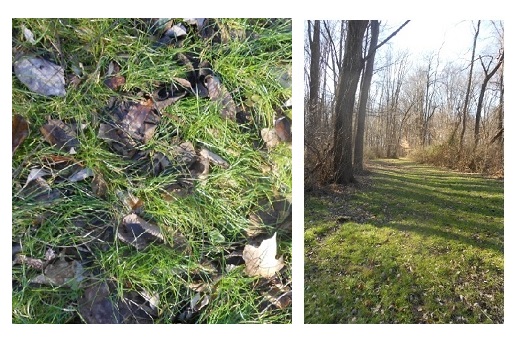
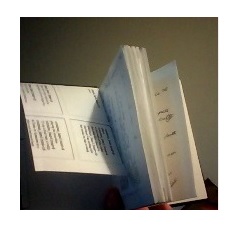 When writers and artists publically record their lives and work online, there are no passwords to unidentified accounts, no dates of doctor's appointments, no discarded code, no never-disclosed-publicly world model information, no purposefully unreadable notes about the lives of fictional characters. (likely to be decoded years later by diligent archivists)
When writers and artists publically record their lives and work online, there are no passwords to unidentified accounts, no dates of doctor's appointments, no discarded code, no never-disclosed-publicly world model information, no purposefully unreadable notes about the lives of fictional characters. (likely to be decoded years later by diligent archivists)
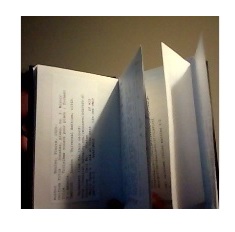 Indeed, at a time when to certain extent the blog form has degenerated into what is popular, we as writers and artists have access to the same platform. Alternative and small poetry presses are a core part of the landscape of contemporary culture, yet they seldom expect a mass audience. In the same way, the public art of writers and artists, who share their work online, augments the environment of the contemporary Internet.
Indeed, at a time when to certain extent the blog form has degenerated into what is popular, we as writers and artists have access to the same platform. Alternative and small poetry presses are a core part of the landscape of contemporary culture, yet they seldom expect a mass audience. In the same way, the public art of writers and artists, who share their work online, augments the environment of the contemporary Internet.
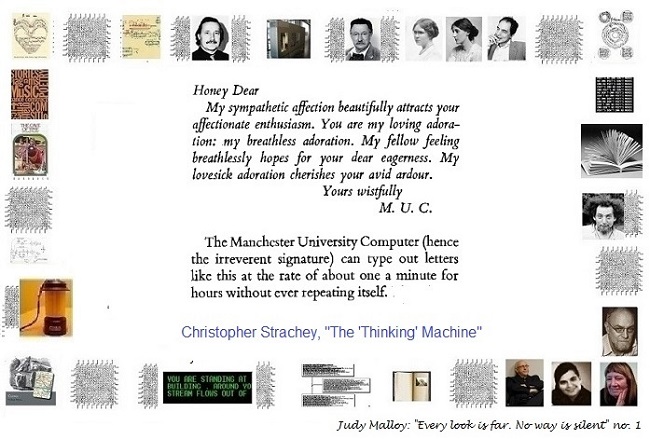
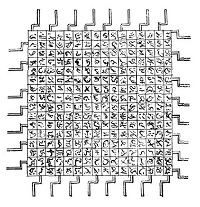 Many permutations flashed across the screen before I chose this title.
Many permutations flashed across the screen before I chose this title.
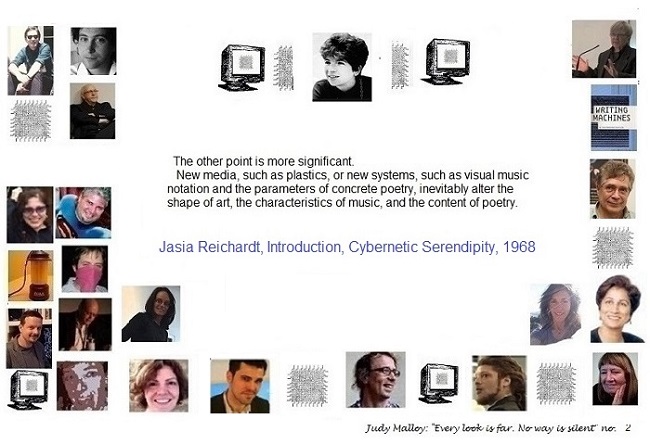
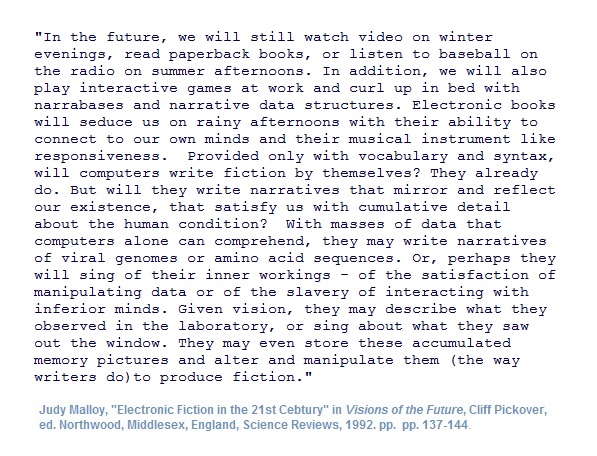
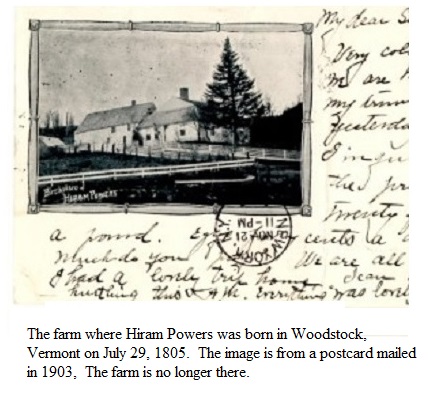 For instance, before I began to write From Ireland with Letters, I knew why there are echoes of baroque violin in the sound of Máire Powers' Irish fiddle, although Máire Powers never discusses this nor have I have disclosed this aspect of her past to the reader. Will she will tell Liam O'Brien in their (not yet written) car trip to the birthplace of Hiram Powers? Everything in this Irish narrative of repetition and slowly disclosed narrative is leading up to this journey of consummation.
For instance, before I began to write From Ireland with Letters, I knew why there are echoes of baroque violin in the sound of Máire Powers' Irish fiddle, although Máire Powers never discusses this nor have I have disclosed this aspect of her past to the reader. Will she will tell Liam O'Brien in their (not yet written) car trip to the birthplace of Hiram Powers? Everything in this Irish narrative of repetition and slowly disclosed narrative is leading up to this journey of consummation.
 4. Since reading James Meehan's paper, [3] the temptation to rewrite his TALE-SPIN by providing a richer word model has occured and reoccured. I would like there to be snow on the trees in winter. I would like to describe the way the water in the river flows through the woods when the snow is melting in the spring, and Joe Bear emerges from hibernation. I would like Joe Bear to walk through the forest with his coat shining in the summer sun.
4. Since reading James Meehan's paper, [3] the temptation to rewrite his TALE-SPIN by providing a richer word model has occured and reoccured. I would like there to be snow on the trees in winter. I would like to describe the way the water in the river flows through the woods when the snow is melting in the spring, and Joe Bear emerges from hibernation. I would like Joe Bear to walk through the forest with his coat shining in the summer sun.
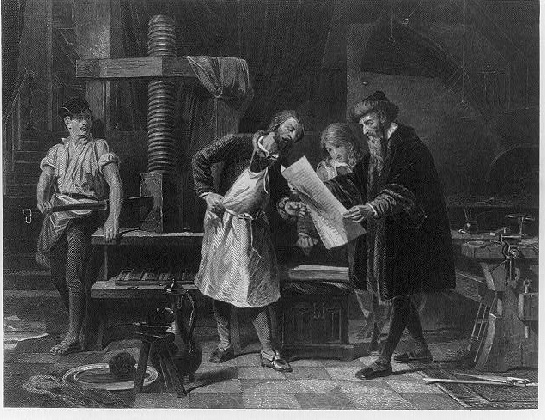
 An initially offline database of short interesting/challenging/evocative paragraphs by writers and critics of electronic literature about the writing of electronic literature -- past, present, and future -- will be constructed. Each paragraph (or several sentences will be printed on a small piece of paper, enhanced by a neo-medieval manuscript border. The statements will come from books, papers, Authoring Software and other sources.
An initially offline database of short interesting/challenging/evocative paragraphs by writers and critics of electronic literature about the writing of electronic literature -- past, present, and future -- will be constructed. Each paragraph (or several sentences will be printed on a small piece of paper, enhanced by a neo-medieval manuscript border. The statements will come from books, papers, Authoring Software and other sources.
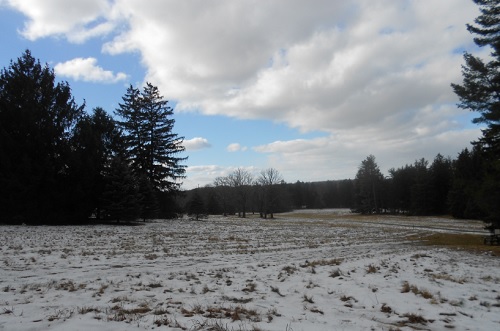


 Rather than randomly permutating words in sentences and displaying these sentences in endless runs, generative hypernarrative, as I have used it, is created with a database of whole lexias. These lexias, (intuitively but not explicitly linked) are randomly (or more precisely pseudo-randomly) displayed on the computer screen. Generative hyperfiction strives to create a different kind of generated literature, a work of fiction or poetry that simulates the way memories come and go in our minds, or in the case of The Not Yet Known Jig, creates a world model from carefully composed, contingent lexias.
Rather than randomly permutating words in sentences and displaying these sentences in endless runs, generative hypernarrative, as I have used it, is created with a database of whole lexias. These lexias, (intuitively but not explicitly linked) are randomly (or more precisely pseudo-randomly) displayed on the computer screen. Generative hyperfiction strives to create a different kind of generated literature, a work of fiction or poetry that simulates the way memories come and go in our minds, or in the case of The Not Yet Known Jig, creates a world model from carefully composed, contingent lexias.
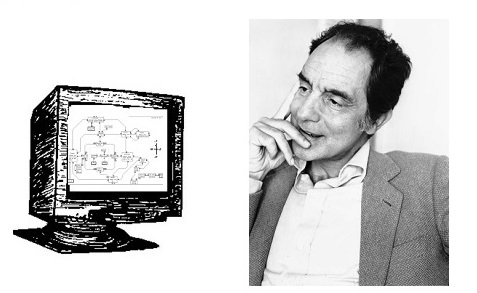
 This week, a transference of door knob (Safran Foer) to door knocker was not intentional. It occurred because earlier in the week, I was searching for an image that would serve to introduce the documentation for The Not Yet Named Jig. The lion-head door knocker (ubiquitous in England at the time) was the only useable image I could find that might have been something that Ralph and ThankLord Shepard brought with them on their voyage to America in the Abigail in 1635.
This week, a transference of door knob (Safran Foer) to door knocker was not intentional. It occurred because earlier in the week, I was searching for an image that would serve to introduce the documentation for The Not Yet Named Jig. The lion-head door knocker (ubiquitous in England at the time) was the only useable image I could find that might have been something that Ralph and ThankLord Shepard brought with them on their voyage to America in the Abigail in 1635.

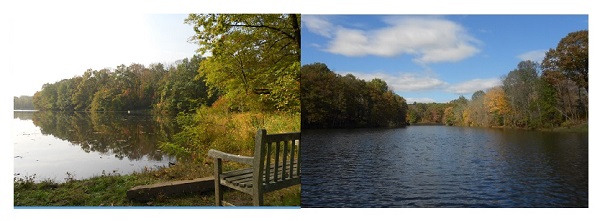
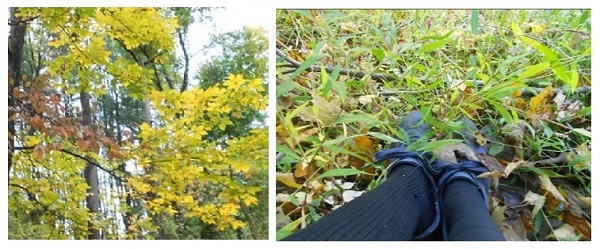
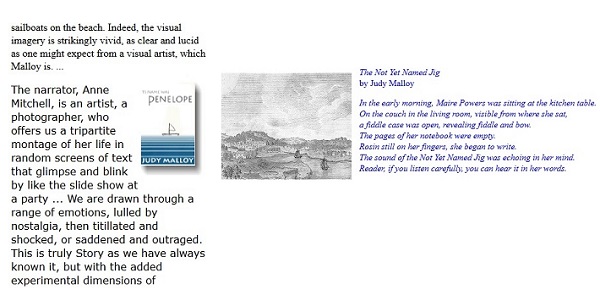
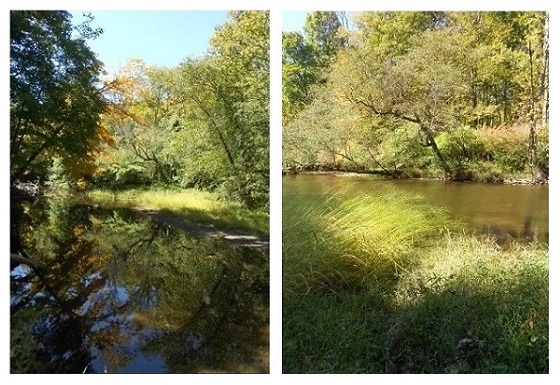
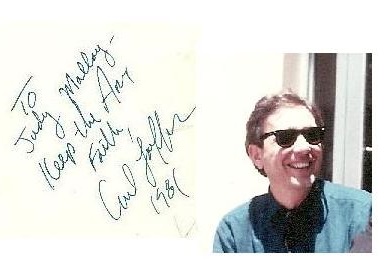 W
hen Carl Loeffler (1946-2001) envisioned Art Com Electronic Network, one of issues on his mind was the problem of the separation of the alternative arts and literature from the reading public. He was, at the time, interested also in putting artists' videos in video stores, or so he told me. He was concerned that, all too often, experimental artists and writers believed that the public wasn't interested in their work, or wouldn't understand their work. Carl thought that part of the problem was that most of the time the public didn't know what we were doing. He asked the question: What would happen if we made experimental literature available online? We found out on ACEN that with artists and writers online to talk about what we were doing, people of all kinds were interested in our work, even conceptual work, such as John Cage's First Meeting of the Satie Society which was published on ACEN in 1986.
W
hen Carl Loeffler (1946-2001) envisioned Art Com Electronic Network, one of issues on his mind was the problem of the separation of the alternative arts and literature from the reading public. He was, at the time, interested also in putting artists' videos in video stores, or so he told me. He was concerned that, all too often, experimental artists and writers believed that the public wasn't interested in their work, or wouldn't understand their work. Carl thought that part of the problem was that most of the time the public didn't know what we were doing. He asked the question: What would happen if we made experimental literature available online? We found out on ACEN that with artists and writers online to talk about what we were doing, people of all kinds were interested in our work, even conceptual work, such as John Cage's First Meeting of the Satie Society which was published on ACEN in 1986.
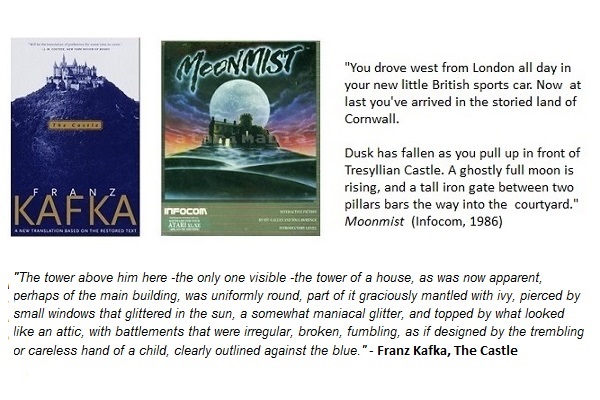

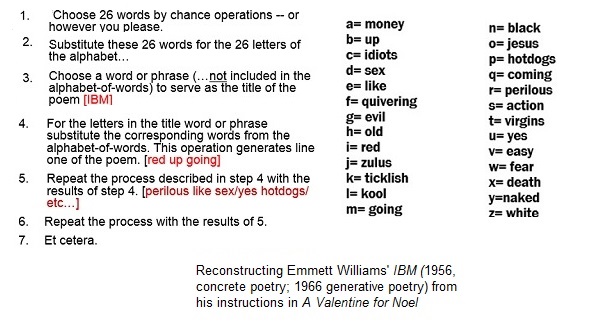
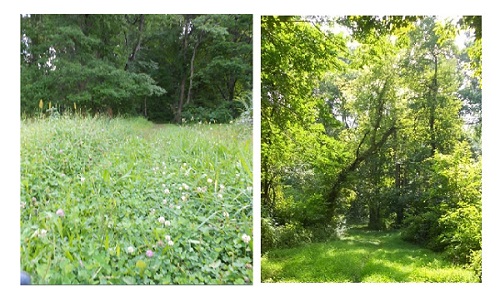
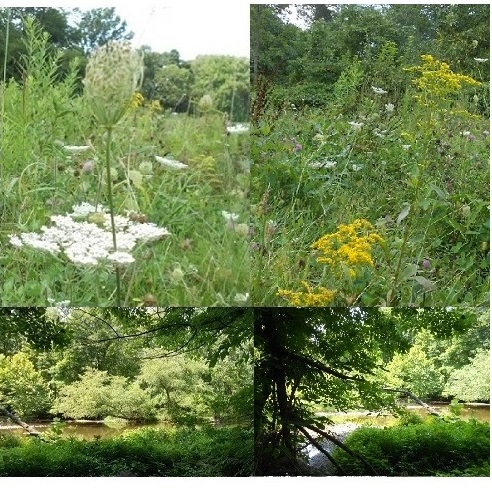
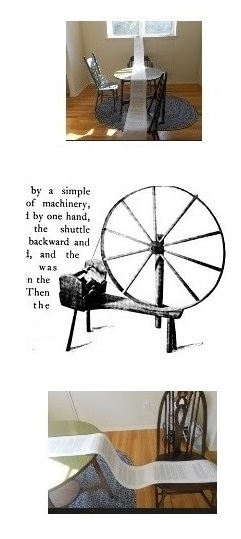 Perhaps -- if eventually not all lexias work seemlessly with each other -- it will be desirable to create several separate files that the program moves between unseen. For instance, (as opposed to how in its name was Penelope, the reader choses which file to access) in The Not Yet Named Jig, the program could respond to the equivalent of "next" by accessing a different array of variables after a certain number of lexias or lexia pages are displayed. The reader might or might not be aware that this is happening.
Perhaps -- if eventually not all lexias work seemlessly with each other -- it will be desirable to create several separate files that the program moves between unseen. For instance, (as opposed to how in its name was Penelope, the reader choses which file to access) in The Not Yet Named Jig, the program could respond to the equivalent of "next" by accessing a different array of variables after a certain number of lexias or lexia pages are displayed. The reader might or might not be aware that this is happening.
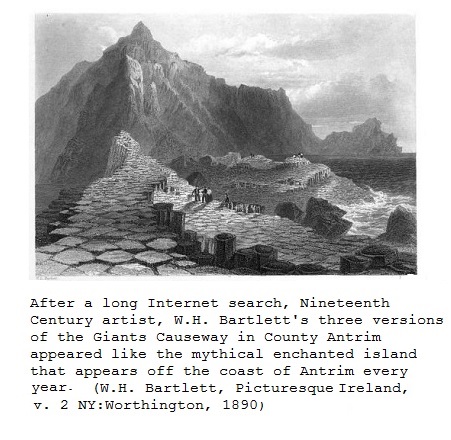
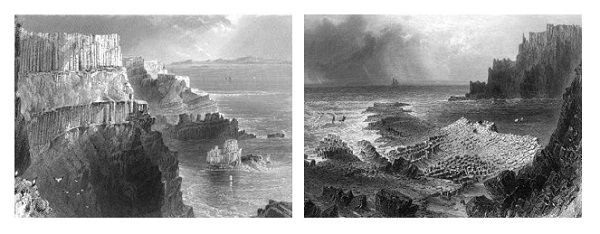
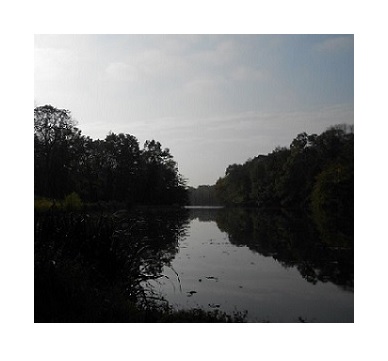 On Sunday morning, on Sunday evening, a return to the histories of HyperCard and Storyspace continued with two different journey-intersected essays on hypertext literature in the days before the World Wide Web.
On Sunday morning, on Sunday evening, a return to the histories of HyperCard and Storyspace continued with two different journey-intersected essays on hypertext literature in the days before the World Wide Web.
 In this week where the good power of social media was in the forefront, I'm quietly working on my book on
In this week where the good power of social media was in the forefront, I'm quietly working on my book on
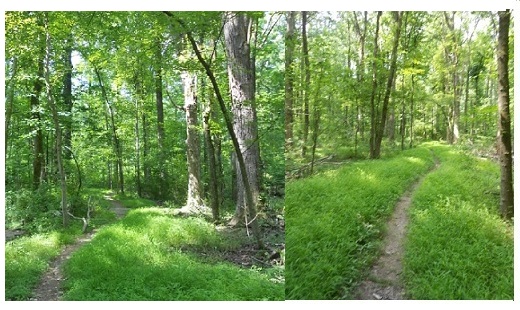
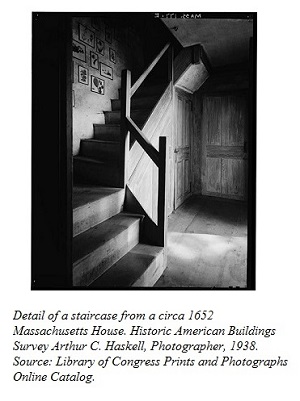 The issue of authorial vision surfaces and resurfaces in discussions of the creation of electronic literature. But as in any art form, the writer's vision is important -- whether that vision is to conceal the author in a remix or omnipresent world model or to immerse the reader in a clearly artist-created environment, or to control or interactively shape reader experience in a work of filmic poetry. One approach is not necessarily better than another.
The issue of authorial vision surfaces and resurfaces in discussions of the creation of electronic literature. But as in any art form, the writer's vision is important -- whether that vision is to conceal the author in a remix or omnipresent world model or to immerse the reader in a clearly artist-created environment, or to control or interactively shape reader experience in a work of filmic poetry. One approach is not necessarily better than another.

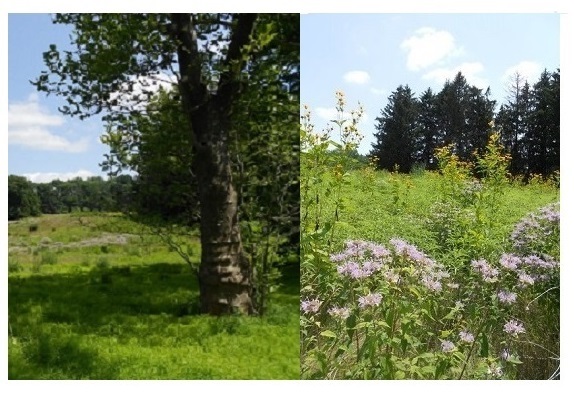
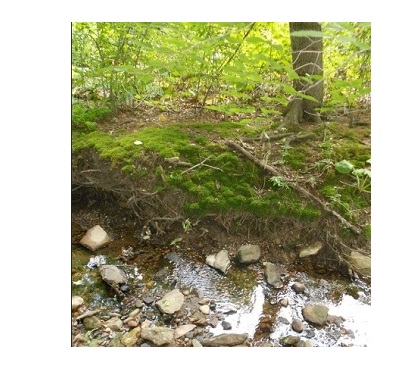 P
acking bread, cheese and Nick Montfort's Twisty Little Passages (instead of a trail map) into my backpack, I headed into the woods near Princeton. A circuitous trail led me to a small brook, moss, ferns, a pleasant place to picnic, and a return to interactive fiction. I hadn't read Nick's Approach to Interactive Fiction, for quite a few years. Most entrancing was the chapter that documents allusions to MIT culture in Zork, a work that -- building on Hunt the Wumpus and Adventure -- was created at MIT for the PDP-10 in 1977 by Tim Anderson, Marc Blank, Bruce Daniels, and Dave Lebling. Perhaps because the name does not convey a world model that would interest me, surprisingly, I had never played Zork. But, I came away from Friday's picnic in the woods with a desire to enter Zork.
P
acking bread, cheese and Nick Montfort's Twisty Little Passages (instead of a trail map) into my backpack, I headed into the woods near Princeton. A circuitous trail led me to a small brook, moss, ferns, a pleasant place to picnic, and a return to interactive fiction. I hadn't read Nick's Approach to Interactive Fiction, for quite a few years. Most entrancing was the chapter that documents allusions to MIT culture in Zork, a work that -- building on Hunt the Wumpus and Adventure -- was created at MIT for the PDP-10 in 1977 by Tim Anderson, Marc Blank, Bruce Daniels, and Dave Lebling. Perhaps because the name does not convey a world model that would interest me, surprisingly, I had never played Zork. But, I came away from Friday's picnic in the woods with a desire to enter Zork.
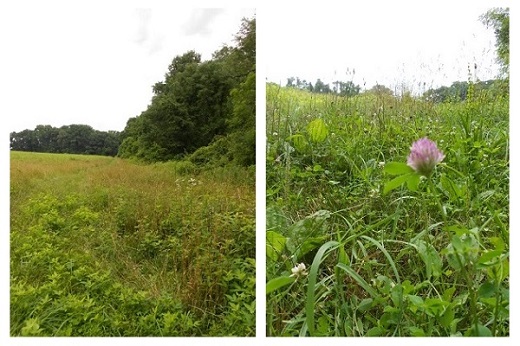
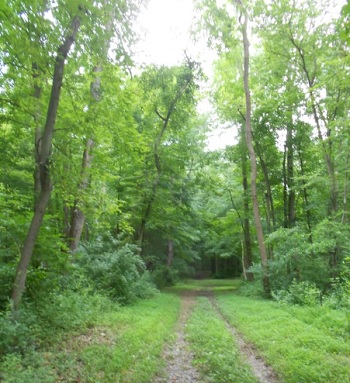
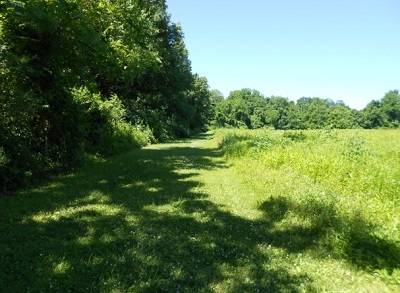
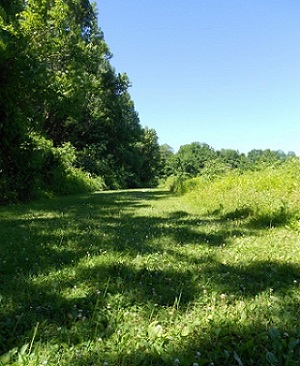
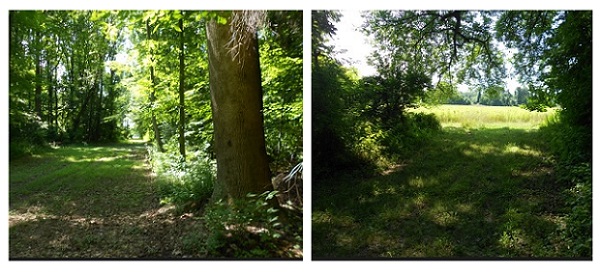

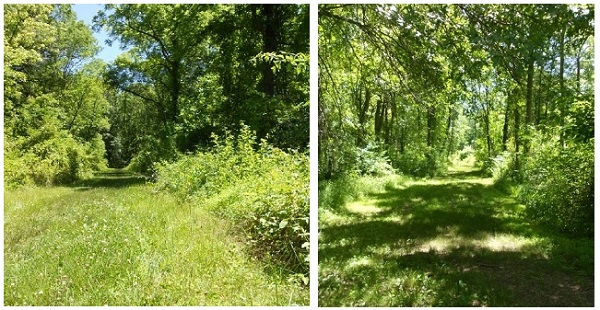



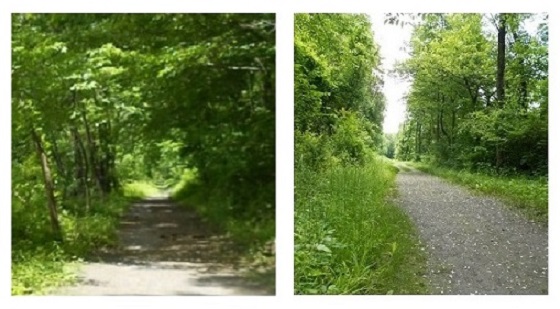 Princeton area trails, walked in the last week of May 2104
Princeton area trails, walked in the last week of May 2104
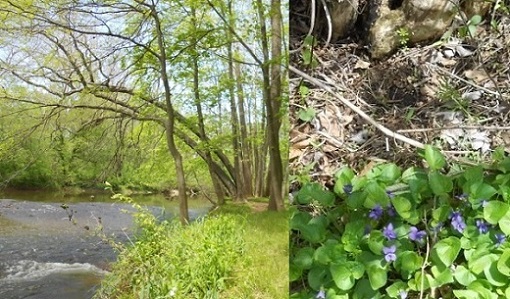
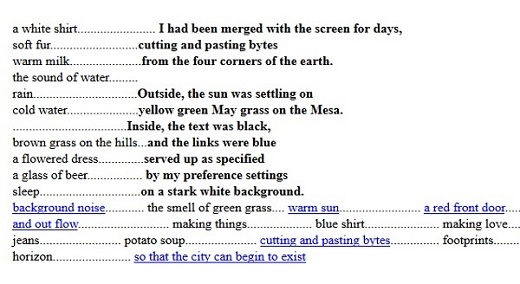
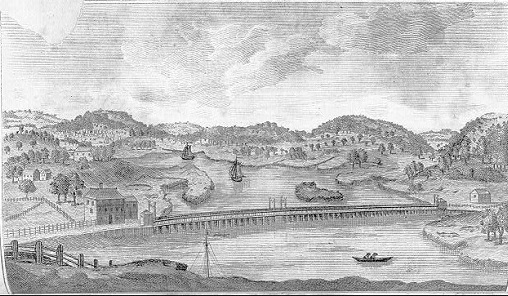
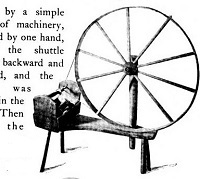
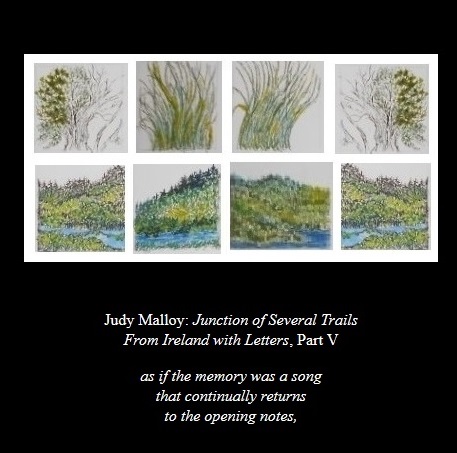
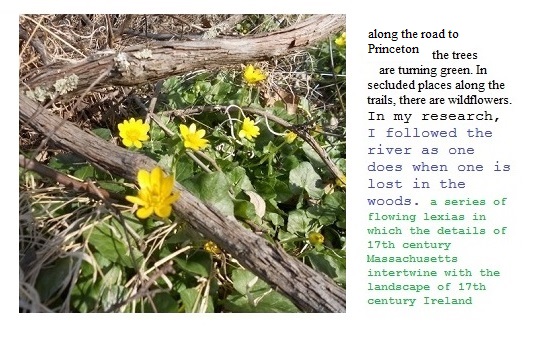
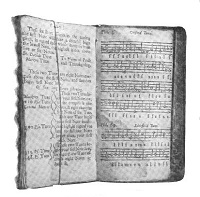
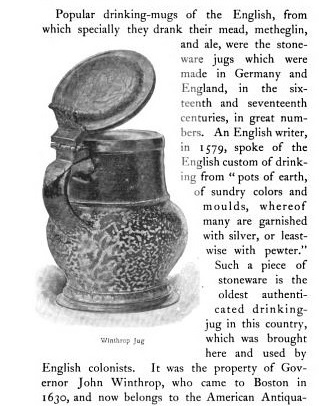
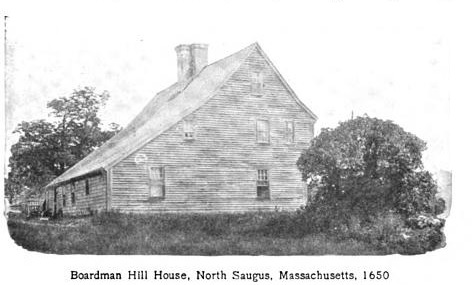
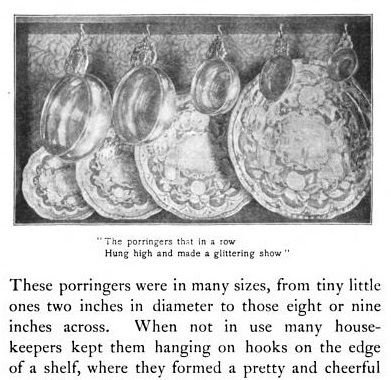
 We have all these details thanks to Massachusetts writer Alice Morse Earle, the author of Home Life in Colonial Days, NY:Macmillan, 1898.
We have all these details thanks to Massachusetts writer Alice Morse Earle, the author of Home Life in Colonial Days, NY:Macmillan, 1898.
